
Smart Materials 2025
Peers Alley Media,Canada

Primary goal of attending an international conference is to present a paper to the experts and influencers. It gives you a platform to exchange your interest-related thoughts, paving the way for possible future collaborations.

Use this platform to build connections with an elite group of wise men and women to enhance your intellect. Young entrepreneurs, this is a great platform to connect with your peers.

Knowledge is Power. Knowledge teaches skills. Skills define excellence. Use this platform to become cognizant of your interest area to achieve excellence in your domain.

Attending a conference give you opportunity to get your abstract or paper published in conference proceedings

Meet and greet a myriad of industry professionals and academia experts with common interest. Every meal will be an opportunity to meet and interact with fellow researchers, attendees and experts.

Expand your professional competency and learn useful tips and tricks of your industry in our skill-building workshops.

Explore insights on recent advancements, new equipment, new techniques, and unpublished data, learn from thought-leaders and get to network with a great line up of speakers.

Our exhibits floor offers the attendees with a dynamic display of the latest products with cutting-edge technology.

Investing in you is the best investment. Peers Alley conferences give the patrons with a feeling of the serendipity of real learning, skill development in strategic workshops, networking and start-up opportunities, thus, is value for money.

Attending the conference gives you much needed break from your regular duties. It also allows you to explore new cities, culture and meet new people. You will feel energized and rejuvenated to return to the university and continue with the job after attending the conference.
Conferences are vital forum for academic researchers and business leaders. "It involves multiple presentations, interactive breakout sessions, hands-on product demonstrations and unrivalled networking opportunities".
We have invited some of the world's most sought-after keynote speakers, experts, brand ambassadors, and industry leaders to share their thoughts and ideas with our conference guests.
Register Now
Here are five objectives of The Premier Global Conclave on Robotics & Automation event strive to accomplish:
Fostering Innovation:
-To facilitate the exchange of innovative ideas and advancements in the field of robotics and automation.
-To showcase the latest technologies and breakthroughs that have the potential to revolutionize various industries.
Networking and Collaboration:
-To bring together industry experts, academicians, researchers, and business leaders for fostering collaborations and partnerships.
-To provide a platform for attendees to network with peers and build connections that could lead to collaborative projects and initiatives.
Skill Development and Knowledge Dissemination:
-To organize workshops, seminars, and training sessions aimed at developing skills and knowledge among participants.
-To facilitate the sharing of knowledge and expertise between experienced professionals and emerging talents in the field.
Promoting Industry Growth:
-To foster the growth of the robotics and automation industry by encouraging investments and supporting start-ups and SMEs in the field.
-To provide a platform for businesses to showcase their products and services to a global audience, thereby helping them to expand their market reach.
Addressing Ethical and Societal Concerns:
-To encourage discussions on the ethical implications of robotics and automation, including concerns related to job displacement, privacy, and security.
-To facilitate dialogue on how the adoption of robotics and automation can contribute to addressing societal challenges such as improving healthcare, addressing environmental issues, and enhancing safety and security.
Welcome to AutoRobo 2024!
Dear Esteemed Participants, Innovators, and Visionaries,
It is with boundless excitement and anticipation that we welcome you to the heart of technological innovation in London, UK, for The Premier Global Conclave on Robotics & Automation - AutoRobo Expo 2024. As we stand at the pinnacle of a new era of digital intelligence, this gathering promises to be a beacon of inspiration, fostering advancements that echo through time.
The world's leading minds and pioneers will gather here from Oct 17 and 18, 2024, weaving a rich tapestry of ideas, inventions, and collaboration opportunities. This meeting of intellect and creativity aims not only to highlight the marvels of modern robotics and automation, but also to pave the way for the next generation of innovative discoveries in the field.
As we set the stage for an immersive experience, prepare yourself to:
1. Discover- Witness first-hand the revolutionary advancements that are shaping the future of robotics and automation.
2. Connect- Engage with an international assembly of experts, professionals, and enthusiasts, all united by a common passion for innovation.
3. Inspire- Be inspired by the powerful synergy of human ingenuity and artificial intelligence working harmoniously to forge a brighter, smarter, and more sustainable future.
4. Innovate- Immerse yourself in a world of innovative solutions and opportunities to collaborate and lead in this dynamic and ever-evolving sector.
**Stepping into the Future, Together**
The conference promises an array of plenary lectures, distinguished speaker talks, symposia, workshops, and poster sessions showcasing cutting-edge research in robotics and automation. Throughout this congress, you will witness a confluence of minds teeming with ideas that challenge the status quo, ignite curiosity, and foster a global community of like-minded individuals who aspire to make a tangible difference in the world. Here, collaborations are forged, insights are shared, and the seeds of the next technological revolution are sowed.
We are really excited to see you in London and hope you have an inspiring and successful meeting.
Warm regards,
AutoRobo 2024
Organizing Committee
Peers Alley Media
1126 59 Ave East, V5X 1Y9, Vancouver BC, Canada

Naval Postgraduate School, USA

Florida Atlantic University, USA

Salve Regina University, USA

National Science Foundation, USA

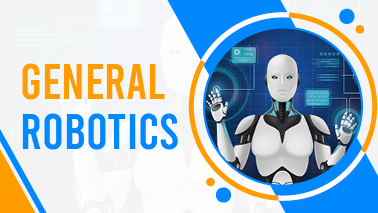
General Robotics refers to the field of robotics that encompasses a wide range of robotic systems and technologies, as opposed to specialized or specific applications more. These robots may possess more specific goals or a greater range of capabilities.
Sensors and perception: To give robots the ability to perceive their surroundings, general robotics frequently includes sensors like cameras, lidar, radar, and other technologies. For actions like navigation, object recognition, and avoiding barriers, perception is essential.
Control and Actuation: This entails creating control systems and algorithms that enable robots to carry out jobs safely and accurately. This includes designing control software for various robot kinds and choosing the proper actuators (such as motors and servos).
Artificial intelligence and machine learning: To help robots learn from their experiences, modify to changing settings, and make autonomous judgments, general robotics increasingly depend on AI and machine learning approaches.
Interaction between Humans and Robots: In many applications, robots must interact with humans in a safe and efficient manner. In order to increase human-robot collaboration, research is being done on human-robot interfaces, safety measures, and human behavior.
Ethical and Legal challenges: As robots are more fully incorporated into society, there are ethical and legal challenges surrounding their use, such as concerns about privacy, liability, and possible employment-related effects.
Overall, General Robotics is a dynamic, diverse area that keeps growing and changing as technology progresses and new uses for robots are discovered. It is essential for enhancing productivity, security, and general quality of life in many different fields.
Tags
Mechatronics Conferences 2024 USA
Robotics in Healthcare Conferences
Robotic Technologies Conferences
Disaster Robotics Conferences
Robotics Conferences 2024 Europe
Robotics Conferences
Robotics Conferences 2024
Robotics Conferences 2024 USA
Automation Conferences
Smart Robotics Conferences
Medical Robotics Conferences
Automation Conferences 2024 Europe
Mechatronics Conferences 2024 Europe

The adaptability and capacities of robotic systems have been greatly improved by the addition of Artificial Intelligence (AI). Robots that use AI technology are more independent and able to handle challenging jobs because they are able to perceive, learn, adapt, and make judgments. The following are some significant ways that robotics includes AI:
Sensing and perception:
AI methods are used in sensor fusion to merge data from various environments.
AI approaches are used to aggregate data from several sensors (such as cameras, lidar, and IMUs) to produce a more thorough and accurate picture of the world for the robot.
Self-sufficient Navigation:
Learning from machines and adapting:
Manipulative Deep Learning:
Edge AI:
Considerations for Safety and Ethics:
Robotic systems are becoming more capable and have more potential uses across a variety of industries, including manufacturing, healthcare, logistics, agriculture, and more, thanks to the integration of AI. This field is fast developing. Additionally, it raises recurring issues with regard to ethics, safety, and the requirement for reliable and understandable AI models in
important applications.
Tags
Robotics and Well-Being Conferences
Robotics Conferences 2024
Automation Conferences
Mechatronics Conferences 2024 USA
Robotics Conferences 2024 USA
Mechatronics Conferences 2024 Europe
Robotics in Healthcare Conferences
Automation Conferences 2024 Asia
Disaster Robotics Conferences
Smart Robotics Conferences
Automation Conferences 2024 Europe
Robotics Conferences 2024 Europe

Robotic Process Automation (RPA) is a technology that uses software robots or "bots" to automate repetitive, rule-based tasks in business processes. These "bots"—which are software programs rather than actual robots—can imitate how people interact with computers and software. RPA is intended to improve efficiency, improve processes, decrease human mistake rates, and free up human workers to concentrate on more difficult, value-added jobs. Here are some essential RPA features:
Automating Repetitive processes: Routine, rule-based processes including data entry, data extraction, data transmission between systems, and form filling are all automated using RPA bots. They can also click, copy, and paste, as well as adhere to pre-established workflows.
Rules-Based Logic: RPA bots adhere to certain directives and rules that developers or business analysts supply. The bots must follow these rules in order to carry out tasks and manage exceptions.
No Coding Skills Needed: Many RPA systems are made to be user-friendly, making it possible for non-developers and business users to establish and maintain automation workflows without having a deep understanding of programming.
Scalability: By deploying additional bots as needed, RPA can be quickly scaled to manage rising workloads. Because of its scalability, it may be used by both small and large enterprises.
Integration with Existing Systems: RPA doesn't require major infrastructure changes in order to function with a variety of software applications, including legacy systems.
Challenges: While RPA offers numerous benefits, it also faces challenges such as security concerns, the need for proper governance, and the potential displacement of human workers in certain roles.
Numerous industries, including finance, healthcare, insurance, customer service, and logistics, among others, have adopted RPA to a large extent. RPA is projected to advance in sophistication as technology advances, adding aspects of artificial intelligence and machine learning to handle ever more difficult tasks and decision-making procedures.
Tags
Medical Robotics Conferences
Disaster Robotics Conferences
Robotics Conferences 2024 Asia
Automation Conferences
Mechatronics Conferences 2024 Europe
Robotic Technologies Conferences
Robotics Conferences 2024 Europe
Mobile Robotics Conferences
Robotics Conferences
Artificial Intelligence Conferences
Automation Conferences 2024 Asia
Automation Conferences 2024 Europe
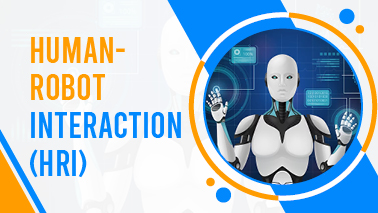
Human-Robot Interaction (HRI) is a multidisciplinary area of study with a primary focus on the design, development, as well as evaluation of systems and interfaces which enable effective interaction and cooperation between humans and robots. The mission of HRI is to develop robots that can engage with people in social, industrial, service, and healthcare contexts in a safe, natural, and intuitive way. Key elements of human-robot interaction are as follows:
The goal of HRI research is to make it possible for robots to comprehend and respond to human voice and language. For efficient communication, this comprises activities like speech recognition, natural language processing (NLP), and language production.
Gesture and Body Language Recognition: To improve communication, robots need to recognize and understand human gestures, facial expressions, and body language. It helps in comprehending the motives and feelings of people.
Social and Emotional Interaction: HRI explores how robots can exhibit social behaviors and emotions to engage with humans on a more emotional level. In the fields of healthcare and personal robotics, this is particularly important.
User-Centered Design: Robot interfaces that are user-friendly, intuitive, and catered to the needs and preferences of human users are made using human-centered design concepts.
Trust and Safety: Protecting people's safety in surroundings with lots of robots is a top priority. Designing safety features and fostering trust between people and robots are the main goals of HRI research.
Collaborative Robotics (Cobots): HRI is vital in developing collaborative robots (cobots) that can work alongside humans in shared workspaces.
Autonomous Decision-Making: In many HRI applications, robots need to make autonomous decisions while considering human input and safety. One of the biggest challenges is balancing robot autonomy with human supervision.
Ethical Considerations: HRI researchers examine legal issues related to robot behavior, privacy, approval, and the eventual impact of robots on human society.
Human-Robot Teams: HRI is essential for establishing productive human-robot teams where humans and robots collaborate to accomplish shared objectives. Applications like manufacturing and search & rescue operations demonstrate this.
Human-Robot Interfaces: The creation of user interfaces that enable communication and control between humans and robots. Touchscreens, voice commands, augmented reality (AR), and virtual reality (VR) systems are a few examples of these interfaces.
Long-Term Interaction: HRI researchers investigate ways to retain engagement and adjust to changing user needs in situations where people and robots interact for extended periods of time, such as in caregiving or education.
Evaluation and User Studies: In order to determine the efficacy and usefulness of human-robot interaction systems, HRI researchers perform user studies and tests.
Cross-Cultural and Cross-Disciplinary Research: HRI research frequently requires recognizing cultural differences and multidisciplinary cooperation because robots interact with people from many cultural backgrounds and domains.
The field of human-robot interaction is dynamic and is ever-changing as technology develops and robots are increasingly integrated into our daily lives. It aspires to develop robots that are not only useful and effective but also able to engage with people in deep and secure ways.
Tags
Automation Conferences
Robotics and Well-Being Conferences
Robotics Conferences 2024 USA
Mobile Robotics Conferences
Automation Conferences 2024 Europe
Robotics Conferences
Smart Robotics Conferences
Disaster Robotics Conferences
Mechatronics Conferences 2024 USA
Robotic Technologies Conferences
Artificial Intelligence Conferences
Automation Conferences 2024 Asia
Medical Robotics Conferences
Robotics Conferences 2024 Asia
Industrial Robotics Conferences
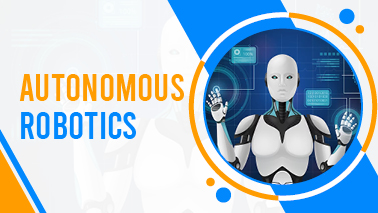
Autonomous Robotics refers to the field of robotics where robots are designed and programmed to perform tasks and make decisions without continuous supervision by humans. These robots have sensors, visual systems, and algorithms that give them the ability to sense and respond to their surroundings, make decisions, and perform activities on their own. Many industries, including manufacturing, transportation, agriculture, healthcare, and space exploration, use autonomous robots. Aspects of autonomous robotics include the following:
Sensors and perception: To learn about their surroundings, autonomous robots use a variety of sensors, including cameras, lidar, radar, ultrasonic sensors, and more. These sensory inputs are processed by perception algorithms to produce a representation of the surroundings.
Navigation and Localization: Autonomous robots use navigation algorithms to determine their position (localization) and plan their routes through an environment. This includes strategies for avoiding obstacles and designing a route.
AI and Machine Learning: To adapt to changing settings, gain experience, and make wise decisions, many autonomous robots use AI and machine learning techniques. Deep learning, computer vision, and reinforcement learning are some examples of this.
Making decisions: Autonomous robots have algorithms for making decisions that enable them to select actions based on how they perceive their surroundings and their goals. These algorithms might be anything from straightforward rule-based systems to intricate AI-driven techniques.
Autonomous Vehicles: Autonomous robotics plays a crucial role in the development of self-driving cars, drones, and autonomous delivery systems. These systems must move about and make quick decisions.
Industrial Automation: Autonomous robots are used in manufacturing and logistics for jobs like material handling, assembly, quality control, and warehouse management. They can function in fully automated workplaces or with human personnel.
Healthcare Robotics: Autonomous robots can help in the healthcare industry with duties including surgery, patient care, and medication distribution. They may work with great accuracy and lower the possibility of mistakes.
Space Exploration: To travel planetary surfaces, gather data, and conduct experiments, autonomous robots are utilized in space exploration missions. Due to lags in communication with Earth, these robots must function autonomously.
Search and Rescue: Robots that can navigate disaster-stricken areas to find and help people are useful in search and rescue efforts.
Monitoring and surveillance: Ground-based robots and autonomous drones are utilized in a variety of applications, such as security, environmental monitoring, and wildlife protection.
Infrastructure and energy: Critical infrastructure, such as bridges, pipelines, and electricity lines, is inspected and maintained by autonomous robots. They can do activities effectively and get to hard-to-reach places.
Ethical and Safety Considerations: The use of autonomous robots brings up a number of ethical and safety challenges, such as assuring the security of people nearby and addressing problems with decision-making and accountability.
Autonomous robotics is a rapidly advancing field, powered by improvements in sensors, AI, and computing power. It keeps growing into new domains and applications, transforming industries and raising standards of efficiency, safety and living.
Tags
Robotics and Well-Being Conferences
Robotics Conferences
Robotics Conferences 2024 Europe
Robotics Conferences 2024 USA
Automation Conferences
Robotics Conferences 2024 Asia
Automation Conferences 2024 Asia
Robotics in Healthcare Conferences
Mechatronics Conferences 2024 Europe
Medical Robotics Conferences
Artificial Intelligence Conferences
Industrial Robotics Conferences
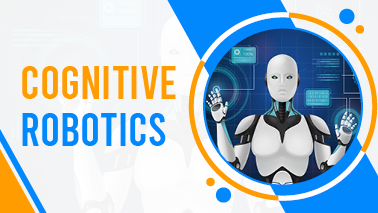
Cognitive Robotics is an area of study that combines principles from robotics, Artificial Intelligence (AI), neuroscience, psychology, and philosophy to develop robots and autonomous systems that possess advanced cognitive capabilities. These robots are created to interact with their environments and humans in becoming more advanced and human-like ways through senses, reasoning, and learning. The goal of cognitive robotics is to build intelligent, responsive robots that can solve challenging issues on their own. Some crucial features of cognitive robots are as follows:
Perception and Sensing: Thinking robots are equipped with advanced sensor systems, such as cameras, lidar, and touch sensors, that allow them to sense their environment. They can accurately identify things, people, and their surroundings because of their sensors.
Reasoning and Planning: Cognitive robots use reasoning and planning algorithms to make decisions and solve complex problems. Depending on their intentions and the limitations of their surroundings, they can make goals, create plans, and carry out activities.
Learning and Adaptation: Cognitive robots use artificial intelligence and machine learning methods to learn from data and adjust to changing conditions. Through methods like deep learning, reinforcement learning, and others, they can gradually improve their performance.
Memory and Knowledge Representation: These robots keep a memory or knowledge base that contains details about their surroundings, previous encounters, and newly acquired knowledge. Using this information will help you make decisions and solve issues.
Natural Language Processing (NLP): Cognitive robots are able to understand and produce human language, allowing more interactive and natural human communication. Their ability to follow verbal directions, respond to inquiries, and have meaningful interactions is made possible through NLP.
Human-Robot Interaction (HRI): Cognitive robotics places an important priority on the creation of user-friendly interfaces and actions that make it simpler for people to work effectively with and interact with robots.
Autonomous Navigation and Exploration: These robots are capable of self-navigating and exploration of complex environments, including mapping, localization, avoidance of challenges, and path planning.
Reasoning about Uncertainty: Cognitive robots may reason about uncertainty in their sensory data and decision-making processes, allowing them to make probabilistic assessments and take appropriate actions.
Social and Emotional Interaction: To improve their interactions with people, certain cognitive robots are programmed to display social behaviors and emotions. This is particularly important for applications like companion robotics and healthcare.
Cognitive designs: Researchers in the field of cognitive robotics frequently create computer designs that simulate cognitive functions including perception, attention, memory, and decision-making that are similar to those of humans.
Applications: Cognitive robotics offers a variety of uses, such as assistive robots in healthcare, teaching robots in education, flexible automation in production, and complicated environment exploration in research.
Ethical and Safety Considerations: As cognitive robots develop greater autonomy and capability, ethical questions about their actions, judgments, and potential biases become more crucial.
A new area of robotics study called cognitive robotics aims to develop robots with mental abilities that can mimic and even exceed the abilities of humans. Although there has been a lot of progress in this field, there are still problems with understanding and simulating complex mental processes, guaranteeing ethical usage of cognitive robots, and dealing with the practical limitations of real-world applications.
Tags
Disaster Robotics Conferences
Robotics in Healthcare Conferences
Medical Robotics Conferences
Robotics Conferences 2024
Mechatronics Conferences
Robotic Technologies Conferences
Automation Conferences
Artificial Intelligence Conferences
Robotics Conferences 2024 Europe
Automation Conferences 2024 Asia
Mechatronics Conferences 2024 Europe
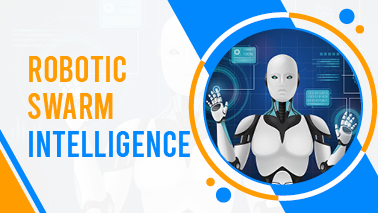
Robotic Swarm Intelligence refers to the study and development of systems consisting of multiple autonomous robots that work together as a single unit to complete tasks. These robotic swarms are modeled after the cooperative behavior and intelligence found in nature swarms, including ant colonies, fish schools, and bird flocks. Swarm robotics is a multidisciplinary field that draws on complex systems theory, artificial intelligence, robotics, and biology. Some important characteristics of robotic swarm intelligence are as follows:
Distributed Autonomy: Each robot in a robotic swarm usually acts independently and under little centralized control. Each robot decides what to do based on its surroundings and interactions with other robots.
Emergent Behavior: A robotic swarm's collective behavior develops through the interactions and cooperation of its individual robots. Complex, adaptive, and frequently self-organized behaviors can result from these interactions.
Scalability: Swarm robotics is scalable, meaning that the number of robots in the swarm can vary and the system can adapt to different swarm sizes. This scalability is useful for scenarios where the number of robots needed to complete the task varies.
Redundancy and Robustness: Swarm systems often exhibit redundancy, where multiple robots can perform similar tasks. Because not all robot failures result in the failure of the entire swarm, this redundancy improves robustness.
Diverse Applications: Robotic swarm intelligence finds applications in a wide range of domains, including search and rescue, environmental monitoring, agriculture, logistics, exploration, and surveillance, among others.
Cooperative Tasks: A swarm of robots works together to complete tasks that would be difficult or impossible for a single robot to complete alone. Examples include creating structures, venturing into uncharted territory, or transporting massive payloads.
Communication: Communication among swarm members can be either direct (robot-to-robot) or indirect (through the environment). Robots can efficiently distribute tasks, share information, and plan actions thanks to communication.
Decentralized Control: Swarm robotics systems frequently use decentralized control algorithms, in which each robot adheres to a set of guidelines or behaviors based on nearby sensing and communication. These guidelines direct the robots' behavior and communication.
Adaptation: Swarm systems can adapt to changes in the environment, including obstacles, dynamic conditions, and the addition or removal of robots from the swarm.
Challenges: Swarm robotics faces difficulties related to coordination, scalability, dependability to failures, efficient task allocation, and the development of suitable control algorithms.
Bio-Inspiration: When designing and refining swarm robotic systems, researchers frequently take cues from natural swarms and collective behaviors seen in animals and insects.
Ethical Issues: As swarm robotics develops and is more fully incorporated into society, ethical issues pertaining to safety, privacy, and responsible use become more crucial.
Robotic Swarm Intelligence is still a topic of active research, with ongoing initiatives to enhance swarm algorithms, create fresh uses, and address real-world issues. By combining the strength and intelligence of a number of relatively straightforward robots working together, it offers the possibility of finding solutions to complex problems.
Tags
Robotics Conferences 2024 Europe
Automation Conferences 2024 Europe
Medical Robotics Conferences
Industrial Robotics Conferences
Automation Conferences 2024 Asia
Robotics Conferences 2024
Mobile Robotics Conferences
Disaster Robotics Conferences
Robotics Conferences 2024 USA
Smart Robotics Conferences
Robotics Conferences
Automation Conferences
Robotic Technologies Conferences
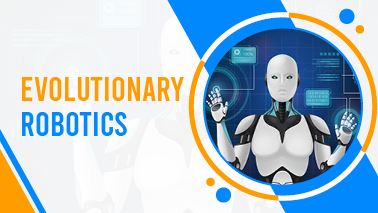
Evolutionary Robotics is a field of robotics and artificial intelligence (AI) that employs principles inspired by biological evolution to design and optimize robots and their behaviors. Robots in evolutionary robotics go through a process of artificial evolution to develop their capabilities and behaviors rather than being explicitly programmed. The goal of this field is to develop robots that can adapt, learn, and perform better in a constantly changing and frequently unpredictable environment. The following are the main features of evolutionary robotics:
Genetic algorithms: which draw their inspiration from genetics and natural selection, are a key component of evolutionary robotics. This method involves building a population of robots, each with a distinct set of parameters that specify their behavior or control strategies. These characteristics are frequently depicted as a "genome."
Selection and Reproduction: Robots in the population are evaluated based on their performance in completing tasks or achieving objectives. A new generation of robots is produced by combining the genetic information (parameters) of the best-performing robots through genetic operators (crossover, mutation).
Fitness Function: To quantify how well each robot completes the assigned task, a fitness function is used. By giving each robot in the population a fitness score, this function directs the selection procedure.
Iterative Process: Robots evolve in successive generations over time through an iterative evolutionary process. Robots that are more appropriately suited to the task tend to be more prevalent as generations go on.
Exploration and Variation: Genetic algorithms generate variation by recombining and mutating genetic material. This variation encourages the investigation of various tactics and behaviors.
Environment Adaptation: Evolutionary robotics is especially well-suited to settings where the task or conditions change over time. Robots' control strategies can change to meet new challenges.
Neuroevolution: In some cases, the parameters that are evolving match the weights and architectures of neural networks. Evolution allows neural network-based controllers to adapt and learn new behaviors.
Real-World and Simulated Environments: Evolutionary robotics is applicable to both simulated and real-world robotic systems. Since simulation enables quick experimentation and evolution without the use of actual robots, it is frequently used.
Behavioral Diversity: Different robots in the population often adopt different strategies to complete the task, leading to diverse behaviors produced by evolutionary robotics. In complex and dynamic environments, this diversity can be beneficial.
Challenges: Challenges in evolutionary robotics include designing effective fitness functions, managing computing resources for evolving robots, and scaling up to more complex tasks and robot behaviors.
Applications: Swarm robotics, autonomous robot control, robotic locomotion optimization, robotic research, and the creation of adaptive robot teams are a few areas where evolutionary robotics has been used.
Hybrid Approaches: To enhance the learning and adaptability abilities of robots, researchers frequently combine evolutionary techniques with other machine learning methods, such as reinforcement learning.
Evolutionary robotics is a powerful approach for designing robots that can develop and evolve in complex and uncertain environments. It provides a different viewpoint on the development of robots, enabling the development of original and creative responses to a variety of robotic challenges.
Tags
Mobile Robotics Conferences
Robotics Conferences
Automation Conferences 2024 Europe
Artificial Intelligence Conferences
Automation Conferences
Mechatronics Conferences 2024 Europe
Mechatronics Conferences 2024 USA
Robotics Conferences 2024 Europe
Smart Robotics Conferences
Robotics Conferences 2024
Robotic Technologies Conferences
Robotics Conferences 2024 USA
Robotics and Well-Being Conferences
Mechatronics Conferences
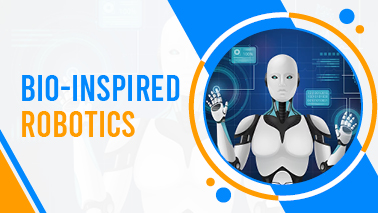
Bio-Inspired Robotics, also known as biomimetic or biologically inspired robotics, is a field of robotics that draws inspiration from biological systems, organisms, and processes to design and develop robots and robotic systems. The goal is to replicate or mimic the principles, structures, and behaviors found in nature to create robots that are more capable, efficient, and adaptable. Bio-inspired robotics leverages insights from biology, biomechanics, and neuroscience to solve complex problems and create innovative robotic solutions. Here are key aspects of bio-inspired robotics:
Biological Inspiration: Bio-inspired robotics takes inspiration from various aspects of the natural world, including the morphology (physical structure) and locomotion of animals, sensory systems, behaviors, and even cognitive processes.
Morphology and Locomotion: Researchers design robot bodies and mechanisms that mimic the physical structures and movements of animals or organisms. For example, hexapod robots with insect-like leg structures for improved stability and mobility.
Sensory Systems: Biomimetic robots often incorporate sensors and perception systems inspired by biological organisms. This includes visual systems modeled after insect compound eyes, sonar systems inspired by bats, or tactile sensors inspired by human skin.
Locomotion Styles: Bio-inspired robots can exhibit various locomotion styles, such as crawling, walking, swimming, flying, or even slithering, depending on the organism they are mimicking or the specific application.
Aspects of bio-inspired robotics to consider include:
Biological Inspiration: Bio-inspired robotics takes inspiration from various aspects of the natural world, including the morphology (physical structure) and locomotion of animals, sensory systems, behaviors, and even cognitive processes.
Morphology and Locomotion: Researchers design robot bodies and mechanisms that copy the physical structures and movements of animals or organisms. For better stability and mobility, consider hexapod robots with insect-like leg structures.
Sensory Systems: Biomimetic robots frequently include sensors and perception systems that take their cues from living things. This includes tactile sensors inspired by human skin, sonar systems modeled after bats, and visual systems modeled after insect compound eyes.
Locomotion Styles: Depending on the organism they are modeling or the particular application, bio-inspired robots may exhibit a variety of locomotion styles, including crawling, walking, swimming, flying, or even slithering.
Materials and Actuators: Researchers create synthetic tendons, muscles, and other structures that mimic the functionality and effectiveness of biological ones. The goal of soft robotics, a branch of bio-inspired robotics, is to build flexible and compliant robots.
Behavior and Interaction: For use in swarm robotics and autonomous systems, biomimetic robots may imitate behaviors seen in animals, such as flocking or schooling behaviors seen in birds and fish.
Neuromorphic Computing: Some bio-inspired robots incorporate neuromorphic computing, which aims to replicate the structure and function of biological neural networks to achieve advanced learning and decision-making capabilities.
Adaptation and learning: In order to adapt to changing environments and gain knowledge from experience, bio-inspired robots frequently incorporate learning algorithms inspired by the brain.
Applications: Bio-inspired robotics has applications in various fields, including search and rescue, observing the environment, agriculture, healthcare, space exploration, and more. For example, robotic prosthetic legs created to mimic human limb movement or drones with enhanced flight capabilities inspired by birds.
Cross-disciplinary Collaboration: To develop cutting-edge solutions, bio-inspired robotics frequently involves collaboration between robotics engineers, biologists, neuroscientists, and material scientists.
Energy Efficiency: Bio-inspired robots strive for higher energy efficiency and sustainability by emulating natural systems, which is important for long-duration or energy-constrained missions.
Challenges: Complex biological systems must be replicated, robustness in real-world settings must be ensured, and biological knowledge must be translated into useful robot design.
Our understanding of biology and robotics is being improved by bio-inspired robotics, which is resulting in the creation of more capable and adaptable robotic systems that can take on a variety of tasks and problems.
Tags
Mechatronics Conferences 2024 Europe
Robotic Technologies Conferences
Mechatronics Conferences
Automation Conferences 2024 Asia
Disaster Robotics Conferences
Automation Conferences 2024 Europe
Robotics Conferences 2024 USA
Robotics Conferences
Robotics in Healthcare Conferences
Artificial Intelligence Conferences
Automation Conferences
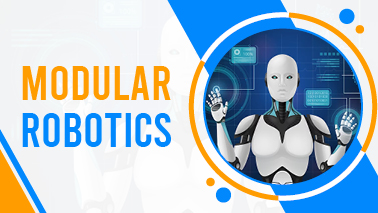
Modular Robotics is a field of robotics that focuses on designing and building robots using modular components or modules that can be reconfigured, rearranged, or combined to create robots with various forms and functionalities. Robots can be more easily designed with this modular approach because it offers flexibility and adaptability for a variety of tasks and environments. Following are some crucial features of modular robotics:
Modular Components: In modular robotics, robots are built from separate modules, with each containing its own set of sensors, actuators, and computing power. These modules can be virtual or physical, represented by software components or hardware elements like sensors, motors, and processors.
Reconfigurability: This feature of modular robotics is its main advantage. Modules can be put together, taken apart, or rearranged to create robots of various sizes, shapes, and abilities.
Scalability: By adding or removing modules, modular robots can frequently be scaled up or down. For applications that call for robots of various sizes and capabilities, this scalability is useful.
Robustness and Redundancy: Multiple modules can carry out the same task in modular robots, which frequently demonstrates redundancy. The robot's robustness is increased by this redundancy because it can keep operating even if some of its modules malfunction.
Self-Healing: When one or more functional modules are damaged or malfunction, some modular robotic systems have the capacity to self-heal or self-repair by dividing up the work among the remaining modules.
Swarm and Collective Behavior: Modular robots can be programmed to exhibit swarm or collective behaviors, where multiple robots cooperate to achieve a common goal. These actions are modeled after those of social animals and natural swarms.
Distributed Control: Control in modular robotics can be distributed, where each module has a degree of autonomy and can make local decisions. This shared power enables more complex and distributed behaviors.
Versatility: Modular robots can be made to carry out a variety of tasks, from straightforward manipulation and locomotion to more complex behaviors like exploration and teamwork.
Applications: Modular robotics can be used in a variety of fields, including manufacturing, education, environmental monitoring, space exploration, and search and rescue operations.
Challenges: Challenges in modular robotics include developing efficient reconfiguration algorithms, ensuring robust communication and coordination among modules, and optimizing the trade-offs between adaptability and complexity.
Research and development: New types of modules are constantly being designed, more effective control algorithms are being developed, and new applications are constantly being investigated in the field of modular robotics.
Real-World Applications: Some modular robotic systems have been used in situations where their adaptability and redundancy can be useful, such as missions for disaster response.
The difficulties of adaptability and versatility in robotics can be addressed in a promising way by modular robotics. Modular robotic systems are likely to become more complex as technology develops and find use in a variety of industries.
Tags
Robotics Conferences 2024 Asia
Smart Robotics Conferences
Robotics Conferences 2024 Europe
Industrial Robotics Conferences
Medical Robotics Conferences
Robotics Conferences 2024
Robotic Technologies Conferences
Automation Conferences 2024 Europe
Disaster Robotics Conferences
Robotics Conferences
Robotics and Well-Being Conferences
Automation Conferences 2024 Asia
Automation Conferences
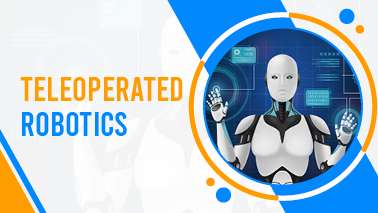
Teleoperated Robotics, also known as teleoperation, is a method of controlling robots from a remote location by a human operator. In teleoperated systems, a human operator uses a user interface to send commands and inputs to the robot in real-time, enabling it to carry out operations in potentially dangerous, inaccessible, or remote locations. Aspects of teleoperated robotics include the following:
Remote Control: In teleoperated robotics, a human operator who may be situated in a different physical location controls the robot remotely. This person is referred to as the "teleoperator" or the "operator."
User Interface: The operator typically uses a user interface, which can be anything from a straightforward joystick or game controller to more intricate systems like exoskeletons, haptic feedback devices, or immersive virtual reality systems.
Real-Time Communication: Teleoperated systems rely on real-time communication links, such as wired or wireless networks, to transmit control signals from the operator to the robot and to receive feedback from the robot's sensors.
Latency: A crucial component of teleoperation is the delay or latency in the communication link between the operator and the robot. For tasks that demand precise control and immediate responses, low latency is crucial.
Sensors and Feedback: Teleoperated robots often have a variety of sensors (e.g., cameras, microphones, force sensors) that provide feedback to the operator. The operator can better control the robot with the help of this feedback.
Applications: Teleoperated robotics is used in various categories, including space exploration, search and rescue operations, dangerous environments (e.g., nuclear facilities, minefields), healthcare (e.g., telemedicine and remote surgery), and remotely piloted vehicles (e.g., drones, remotely operated underwater vehicles).
Safety: By enabling humans to perform tasks in hazardous environments where direct human intervention is not possible, such as radioactive or toxic environments, teleoperation improves safety.
Training and Skill Transfer: Teleoperated systems can be used for training purposes, enabling novice operators to learn from experienced ones by observing and participating in teleoperation sessions.
Mixed Autonomy: Some teleoperated systems have different levels of autonomy that let the robot work on its own when it can while still being supervised and guided by the operator during more difficult or crucial tasks.
Challenges: Reliable communication, human-robot interaction, system latency, and the application of human skills to remote tasks are all issues that teleoperated robotics must deal with.
Ethical and Legal Issues: In some situations, ethical and legal issues might come up, such as figuring out who would be responsible for accidents or damage brought on by remotely controlled robots.
Teleoperated robotics continues to advance with the development of more sophisticated control interfaces, improved sensory feedback, and enhanced communication technologies. It is essential for enabling human interaction and control with robots in a variety of applications.
Tags
Robotics Conferences
Robotic Technologies Conferences
Robotics Conferences 2024 USA
Automation Conferences
Smart Robotics Conferences
Robotics in Healthcare Conferences
Robotics Conferences 2024 Europe
Mechatronics Conferences 2024 USA
Robotics Conferences 2024 Asia
Disaster Robotics Conferences
Automation Conferences 2024 Europe

Telerobotics and Telepresence are related fields that involve remote control and operation of robots or systems, allowing humans to interact with and manipulate objects and environments from a distance. Although these two ideas are similar, there are differences between them as well:
Telerobotics:
Examples of telerobotic systems include surgical robots operated by surgeons during minimally invasive procedures, remotely operated underwater vehicles (ROVs) used for deep-sea exploration, and drones piloted from a distance.
Telepresence:
Examples: Telepresence robots, like teleconferencing robots used in business settings, have cameras and screens that enable remote participants to "attend" meetings or communicate with people in another location as if they were physically present.
In conclusion, telerobotics is primarily concerned with real-time control of remote robots performing tasks, frequently in demanding or hazardous environments. However, telepresence, which frequently uses virtual reality or augmented reality technologies, aims to give the operator a sense of presence and immersion. It may also involve remote control.
Tags
Industrial Robotics Conferences
Medical Robotics Conferences
Robotics Conferences
Robotics in Healthcare Conferences
Robotics and Well-Being Conferences
Robotic Technologies Conferences
Mechatronics Conferences 2024 Europe
Robotics Conferences 2024 Asia
Robotics Conferences 2024 Europe
Mechatronics Conferences
Robotics Conferences 2024 USA
Mobile Robotics Conferences
Mechatronics Conferences 2024 USA
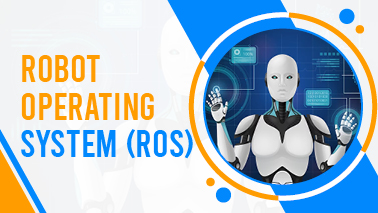
The Robot Operating System (ROS) is an open-source software framework used for developing and controlling robots. The building and programming of robotic systems is made easier by the libraries, tools, and conventions offered by ROS. It is widely used for many different kinds of robots, including self-driving vehicles, drones, industrial robots, and mobile robots, in both research and industry. Here are some of ROS's salient features:
Distributed and Modular Architecture: ROS was created with a distributed and modular architecture. It is made up of a number of packages, each of which provides a different set of features. These packages are available for developers to pick from and incorporate into unique robot applications.
Communication: ROS uses a publish-subscribe communication model that allows different components (nodes) of a robotic system to communicate with each other. Nodes have the ability to publish data (such as sensor readings) to topics, and other nodes have the ability to subscribe to those topics in order to receive and process the data.
Data Sharing: By using standard message formats for a variety of data types, such as sensor data, control commands, and state information, ROS makes it easier for nodes to share data with one another. This makes information exchange between various components of a robot's software system simple.
Visualization and Debugging: To visualize robot states and sensor data, ROS offers visualization tools like RViz. To assist developers in identifying problems with their robot software, it also provides debugging tools and logging capabilities.
Hardware Abstraction: ROS offers layers for sensors, actuators, and motor controllers that act as hardware abstraction layers, allowing developers to interface with a variety of hardware components without having to write low-level drivers.
Community and Ecosystem: The user and developer communities for ROS are both sizable and vibrant. This ecosystem is made up of a sizable number of open-source libraries and packages that developers and researchers from all over the world have contributed.
Robot simulation: ROS supports simulation platforms like Gazebo, enabling programmers to test and validate their robot software in virtual environments that closely resemble the real world before putting it to use on actual robots.
Versioning: ROS has a number of iterations, the two most well-known of which are ROS 1 (also referred to as ROS Melodic, ROS Noetic, etc.) and ROS 2. With better real-time capabilities, better support for multi-robot systems, and compatibility with more platforms and middleware, ROS 2 was created to address some of ROS 1's shortcomings.
Real-World Applications: Robot operating systems, or ROS, are widely used in a variety of applications, including autonomous vehicles (such as self-driving cars and drones), industrial automation (such as robotic arms and manufacturing robots), service robots (such as robotic vacuum cleaners and healthcare robots), and research in areas like computer vision, machine learning, and artificial intelligence.
ROS is a valuable tool for robot development across a variety of domains as it continues to develop and broaden its capabilities. It is an effective platform for because of its open-source nature and vibrant community.
Tags
Robotics Conferences 2024 Europe
Robotics Conferences 2024 USA
Automation Conferences 2024 Europe
Disaster Robotics Conferences
Artificial Intelligence Conferences
Mechatronics Conferences 2024 Europe
Automation Conferences 2024 Asia
Robotics Conferences
Mechatronics Conferences 2024 USA
Industrial Robotics Conferences
Robotics Conferences 2024 Asia
Robotic Technologies Conferences
Robotics in Healthcare Conferences
Smart Robotics Conferences
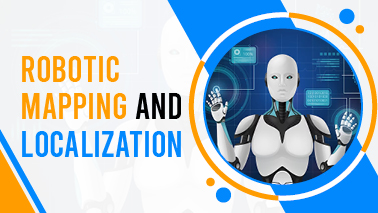
Robotic Mapping and Localization are fundamental processes in the field of robotics that enable robots to understand and navigate their environments. A wide range of applications, such as autonomous vehicles, drones, industrial robots, and mobile robots used in settings like warehouses and healthcare facilities, depend on these processes. Here is a summary of robotic localization and mapping:
Mapping:
Localization:
In conclusion, robotic mapping and localization are fundamental skills that give robots the ability to effectively navigate and communicate with their environment. In order to create maps and determine the robot's pose within those maps, these processes integrate sensor data, odometry, and sophisticated algorithms. This allows for safe and effective robot operation in a variety of environments.
Tags
Smart Robotics Conferences
Artificial Intelligence Conferences
Robotics Conferences 2024 Asia
Mechatronics Conferences
Automation Conferences 2024 Europe
Automation Conferences
Robotics Conferences 2024
Mobile Robotics Conferences
Industrial Robotics Conferences
Robotics and Well-Being Conferences
Disaster Robotics Conferences
Medical Robotics Conferences
Robotics Conferences
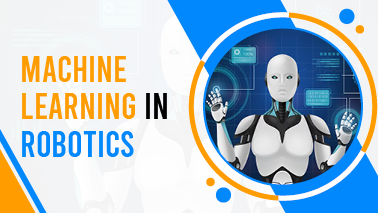
Machine Learning (ML) plays a pivotal role in robotics by enabling robots to learn from data, adapt to their environments, and perform tasks more autonomously and intelligently. Robotic systems use ML techniques for a variety of functions, including perception, control, decision-making, and task execution. The following are some significant applications of machine learning in robotics:
Sensing and perception:
Control and Actuation:
Map-making and localization:
Autonomous Navigation:
Learning from Example (LfE):
Adaptive Control:
Identifying Anomalies and Faults:
Manipulating Objects and Grasping:
Robotic applications frequently use convolutional neural networks (CNNs), recurrent neural networks (RNNs), and deep reinforcement learning (DRL).
Tags
Industrial Robotics Conferences
Robotics in Healthcare Conferences
Mechatronics Conferences 2024 USA
Mobile Robotics Conferences
Robotic Technologies Conferences
Robotics Conferences 2024 USA
Artificial Intelligence Conferences
Disaster Robotics Conferences
Mechatronics Conferences
Smart Robotics Conferences
Automation Conferences
Mechatronics Conferences 2024 Europe
Robotics Conferences 2024 Asia
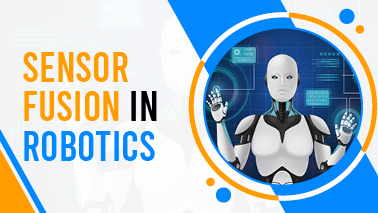
Sensor Fusion in Robotics is a technique that involves combining data from multiple sensors in order to gain a more accurate, detailed, and reliable representation of a robot's environment. The judgment, localization, and decision-making abilities of a robot are improved through this process. In many robotic applications, such as autonomous vehicles, drones, industrial robots, and mobile robots, sensor fusion is crucial. The following are important elements of robotic sensor fusion:
Sensor Diversity: Robots are equipped with a variety of sensors, each with its own strengths and limitations. Cameras, lidar, radar, ultrasonic sensors, GPS, inertial measurement units (IMUs), encoders, and other sensors are among them. In order to enhance overall perception, sensor fusion aims to take advantage of these sensors' complementary nature.
Types of Sensor Fusion:
Benefits of Sensor Fusion:
Modern robotics relies heavily on sensor fusion, which enables robots to function well in challenging and dynamic real-world situations. The capabilities of robots in various applications continue to be improved by developments in sensor technology and fusion algorithms.
Tags
Mechatronics Conferences
Mobile Robotics Conferences
Mechatronics Conferences 2024 Europe
Robotics Conferences 2024 Europe
Robotics Conferences 2024 Asia
Robotics Conferences 2024
Artificial Intelligence Conferences
Robotics Conferences
Smart Robotics Conferences
Robotic Technologies Conferences
Robotics Conferences 2024 USA
Automation Conferences 2024 Europe
Automation Conferences 2024 Asia
Automation Conferences
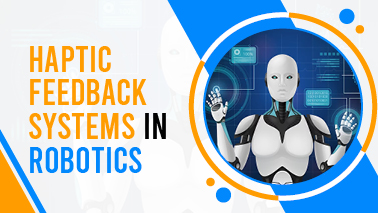
Haptic feedback systems in robotics, also known as haptic systems or haptic interfaces, provide tactile or force feedback to users, allowing them to feel and interact with virtual or remote environments through a sense of touch. These systems are extensively used in teleoperation, virtual reality (VR), and telemedicine, among other robotic applications. The following are crucial components of robotics' haptic feedback systems:
Haptic Feedback System Components:
Types of Haptic Feedback:
Robotics Applications of Haptic Feedback:
Challenges and Considerations:
Haptic feedback systems are continuously advancing, with ongoing research in areas like wearables, augmented reality, and novel actuators, contributing to improved human-robot interactions and user experiences.
Tags
Medical Robotics Conferences
Robotics in Healthcare Conferences
Robotics Conferences 2024 USA
Automation Conferences
Robotics and Well-Being Conferences
Robotics Conferences 2024 Asia
Mobile Robotics Conferences
Automation Conferences 2024 Europe
Mechatronics Conferences 2024 Europe
Automation Conferences 2024 Asia
Robotics Conferences 2024 Europe
Robotics Conferences

The term "Real-Time Robotics" represents a branch of robotics that focuses on the creation and application of robotic systems that can make quick decisions and carry out actions in real-time. "Real-Time" in the context of real-time robotics refers to the requirement for the robot to react to sensory input and carry out tasks with a very low latency, frequently in the range of milliseconds or microseconds. This is crucial for tasks like autonomous vehicles, industrial automation, surgical robots, and other devices that need to react quickly to shifting environments.
Here are some essential real-time robotics elements and ideas:
Low Latency: Real-Time robotic systems are made to reduce the time it takes from the moment sensory input is received until an appropriate response is generated.
Sensor Fusion: Real-Time robots often rely on multiple sensors, such as cameras, lidar, radar, and ultrasonic sensors, for understanding and detecting their surroundings. Data from these sensors are combined using sensor fusion techniques to produce a complete and accurate picture of the environment.
Control Systems: The foundation of real-time robotics is a set of real-time control algorithms. These algorithms dictate the robot's movements and actions in response to sensory data. In order to meet the needs for real-time operations, control systems must be quick and effective.
Safety: Safety is a key issue in real-time robotics, especially in applications like autonomous vehicles and medical robotics. Even when operating in hazardous environments, these systems must be created to function dependably and guarantee the security of both the robot and its surroundings.
Predictive Modeling: Some real-time robotic systems use predictive modeling to assume future events or changes in the environment. To predict the movements of other vehicles and pedestrians, for example, autonomous vehicles may use predictive models.
Hard Real-Time vs. Soft Real-Time: In real-time robotics, there is a distinction between "hard real-time" and "soft real-time" systems. Missing a deadline can have disastrous effects in hard real-time systems, which are used, for instance, in the aviation and medical industries. Soft real-time systems have looser timing constraints, and even if a deadline is missed, performance may still suffer.
Machine Learning: Machine learning techniques, such as deep reinforcement learning, are increasingly being applied in real-time robotics to improve decision-making and reactivity in complex and dynamic environments.
Real-Time Robotic systems frequently use embedded hardware, which is equipped with specialized processors or hardware accelerators to handle the demands of real-time processing.
Tags
Industrial Robotics Conferences
Robotics Conferences 2024 Asia
Disaster Robotics Conferences
Mechatronics Conferences 2024 Europe
Robotics and Well-Being Conferences
Automation Conferences
Robotics Conferences 2024 Europe
Mechatronics Conferences
Mechatronics Conferences 2024 USA
Automation Conferences 2024 Asia
Robotic Technologies Conferences
Mobile Robotics Conferences
Robotics Conferences 2024 USA
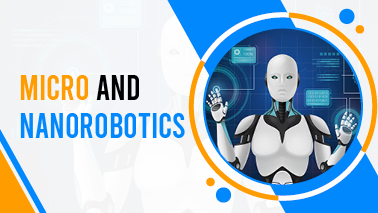
Micro and nanorobotics is a field of science and technology that focuses on the development and application of miniature robots at the micro and nanoscale. These robots, also known as microbots and nanobots, are created to carry out various operations in settings that are inaccessible to or dangerous for humans or robots of a typical size. Aspects of micro- and nanorobotics include the following:
Scale and Size:
Applications:
Challenges:
Latest Technologies:
Tags
Mechatronics Conferences 2024 USA
Robotics in Healthcare Conferences
Smart Robotics Conferences
Disaster Robotics Conferences
Artificial Intelligence Conferences
Robotics Conferences 2024
Mechatronics Conferences
Robotics Conferences 2024 Asia
Robotic Technologies Conferences
Mechatronics Conferences 2024 Europe
Robotics Conferences
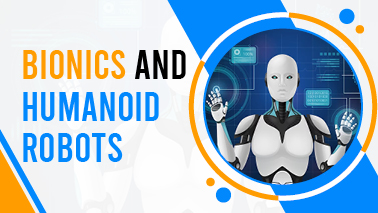
Bionics and Humanoid robots are two different but related fields that involve the combination of biological and mechanical systems to create machines that mimic or augment human capabilities. An overview of each field is given below:
Bionics:
Definition: Bionics, briefly as "biological electronics," is the study of applying biological principles to the design and development of artificial systems. It aims to comprehend and mimic in artificial systems the natural biological functions and processes.
Applications:
The field of bionics has a wide range of uses, such as:
Examples: Advanced prosthetic limbs like the bionic hand, which can provide fine motor control and sensory feedback, and artificial organs like the artificial heart or pancreas are examples of bionic innovations.
Humanoid Robots:
Definition: Humanoid robots are machines designed to imitate and mimic human physical characteristics and abilities. They typically have a head, the body, arms, and legs as well as a humanoid body shape.
Applications:
Humanoid robots have diverse applications, such as:
Examples of notable humanoid robots include Sophia (created by Hanson Robotics), ASIMO (created by Honda), and Pepper (created by SoftBank Robotics).
Relationship between humanoid robots and bionics:
Humanoid robots and bionics are separate fields, but they can overlap in a number of ways:
Tags
Mechatronics Conferences 2024 USA
Mechatronics Conferences
Industrial Robotics Conferences
Robotics Conferences
Robotics Conferences 2024 USA
Robotics in Healthcare Conferences
Robotic Technologies Conferences
Mechatronics Conferences 2024 Europe
Robotics Conferences 2024 Europe
Robotics and Well-Being Conferences
Smart Robotics Conferences
Disaster Robotics Conferences
Medical Robotics Conferences
Automation Conferences 2024 Europe
Artificial Intelligence Conferences
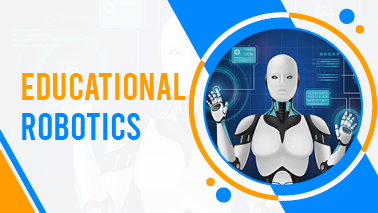
Educational Robotics is a field that combines principles of robotics and education to create a learning environment that fosters the development of various skills and knowledge in students. It makes use of robotics technology to involve students in experiential, hands-on learning opportunities. The following are some essential features and gains of educational robotics:
Hands-on Learning: Educational Robotics provides a practical, face-to-face approach to learning. Complex concepts become more tangible and understandable for students when they have the opportunity to build, program, and interact with robots.
STEM Education: It is a powerful tool for teaching STEM (Science, Technology, Engineering, and Mathematics) subjects. Robotics is a great subject for teaching physics, math, computer science, and engineering because robotics activities frequently incorporate these topics.
Problem-Solving: As they build and program robots to carry out specific functions or overcome challenges, students develop their problem-solving abilities. To troubleshoot and enhance the performance of their robots, they must use critical and inventive thinking.
Teamwork and Collaboration: Many educational robotics programs encourage students to collaborate with their peers by incorporating teamwork into the curriculum. They learn important social and communication skills from this, which are essential in everyday life.
Coding and programming skills: Educational robotics frequently involves programming robots in specialized robotics programming languages or in languages like Scratch or Python. This aids in the development of computational thinking and coding skills in students.
Creativity: Students are encouraged to design and customize their robots, fostering creativity and innovation. The ability to design and alter robots freely encourages creativity and the investigation of novel solutions.
Real-world Applications: Educational Robotics are able to show how robotics technology is used in various industries, from manufacturing and healthcare to agriculture and space exploration. Students may be motivated to pursue careers in STEM fields by this.
Multidisciplinary Learning: Robotics projects often require students to draw from multiple subject areas, applying knowledge from various disciplines. This method of problem-solving is multidisciplinary and reflects real-world situations.
Adaptability: From elementary school to higher education, Educational Robotics can be adjusted to different age groups and skill levels. It is a useful tool for educators because of its adaptability.
Engagement and Motivation: Robotics is inherently captivating, and it can motivate students to become more interested in learning. Robotics' hands-on approach engages students and improves learning.
Career Readiness: Students acquire knowledge and skills necessary for the job market by studying robotics. They can improve their readiness for careers in automation, artificial intelligence, and robotics engineering.
Inclusivity: Educational robotics can be modified to meet the needs and abilities of students with a range of learning needs. All students have the chance to take part and learn at their own pace.
Tags
Artificial Intelligence Conferences
Medical Robotics Conferences
Mobile Robotics Conferences
Robotics Conferences 2024 USA
Robotics and Well-Being Conferences
Automation Conferences
Robotics Conferences 2024 Europe
Mechatronics Conferences
Mechatronics Conferences 2024 Europe
Robotics Conferences 2024
Automation Conferences 2024 Asia
Robotic Technologies Conferences
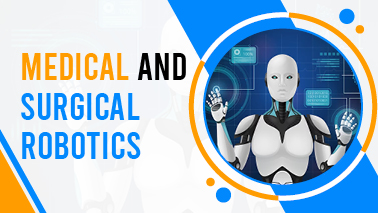
Medical and Surgical Robotics represent a field of technology and healthcare that combines robotics with medical and surgical procedures to enhance clarity, flexibility, and safety in various medical interventions. By enabling doctors to carry out complex procedures with greater accuracy and less invasive methods, these technologies have the potential to revolutionize healthcare. A few crucial features of medical and surgical robotics are listed below:
Medical and surgical robot types:
Advantages of Medical and Surgical Robotics:
Applications:
Challenges and Considerations:
Tags
Mechatronics Conferences
Robotics Conferences 2024 USA
Robotics Conferences 2024
Mechatronics Conferences 2024 Europe
Robotics Conferences
Robotics and Well-Being Conferences
Automation Conferences 2024 Europe
Automation Conferences 2024 Asia
Robotics Conferences 2024 Asia
Mobile Robotics Conferences
Medical Robotics Conferences
Mechatronics Conferences 2024 USA
Robotics in Healthcare Conferences
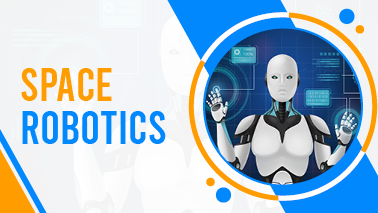
Space Robotics refers to the development and use of robotic systems for various applications in outer space. These robotic systems are designed to perform tasks in space environments, including in Earth orbit, on the Moon, on Mars, and beyond. Space robotics plays a crucial role in space exploration, satellite servicing, space station maintenance, planetary exploration, and more. Here are some key aspects of space robotics:
Types of Space Robots:
Applications of Space Robotics:
Challenges in Space Robotics:
Advancements in Space Robotics:
Tags
Automation Conferences
Robotics in Healthcare Conferences
Robotics Conferences 2024 USA
Robotics Conferences 2024 Asia
Robotics Conferences 2024
Artificial Intelligence Conferences
Disaster Robotics Conferences
Mobile Robotics Conferences
Automation Conferences 2024 Europe
Mechatronics Conferences 2024 Europe
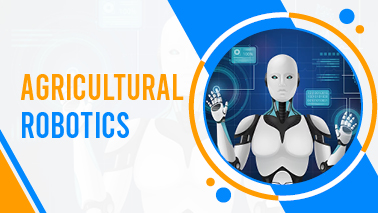
Agricultural robotics, often referred to as agri-robots or agbots, is a field of robotics technology that focuses on the development and application of robots and automation systems in agriculture. These robots are designed to perform a wide range of tasks in farming and agriculture, with the primary goal of increasing efficiency, productivity, and sustainability in the agricultural sector. Here are some key aspects and applications of agricultural robotics:
Precision Agriculture: Agricultural robots are used for precision farming, which involves using data and technology to optimize various agricultural processes. Robots can assist in tasks like planting, seeding, and harvesting crops with high precision, reducing resource wastage and improving yields.
Weeding and Pest Control: Robots equipped with cameras and sensors can identify and remove weeds from fields without the need for herbicides. They can also help in the targeted application of pesticides to minimize chemical usage.
Harvesting: Robotic harvesters are designed to pick fruits, vegetables, and other crops with care and precision. These machines can work autonomously and are particularly useful for labor-intensive crops.
Monitoring and Data Collection: Drones and ground-based robots are used to monitor crop health, soil conditions, and environmental factors. They can collect data such as temperature, humidity, and nutrient levels, enabling farmers to make data-driven decisions.
Livestock Management: Robots are employed in livestock farming for tasks like feeding, herding, and milking. Robotic milking systems, for example, can milk cows automatically and continuously.
Autonomous Tractors: Autonomous or semi-autonomous tractors are capable of plowing, seeding, and tilling fields with minimal human intervention. They can follow precise GPS-guided paths, optimizing the use of land and resources.
Greenhouse Automation: Robots are used in greenhouse environments to monitor and control temperature, humidity, and lighting. They can also assist in planting and harvesting crops within controlled environments.
Labor Shortage Mitigation: Many regions are facing labor shortages in agriculture. Agricultural robots can help fill the labor gap by performing tasks that are physically demanding or repetitive.
Post-harvest Handling: Robots are used for sorting, grading, and packing harvested produce in a consistent and efficient manner, reducing post-harvest losses.
Research and Development: The development of agricultural robots involves ongoing research in fields such as computer vision, machine learning, and sensor technology to improve the capabilities and efficiency of these machines.
Challenges in the field of agricultural robotics include the high cost of robotic systems, integration with existing farming practices, and ensuring that these technologies are accessible to small-scale farmers. However, as technology advances and economies of scale are realized, it is expected that agricultural robotics will play an increasingly important role in modernizing and improving the sustainability of agriculture worldwide.
Tags
Robotic Technologies Conferences
Robotics Conferences 2024
Mechatronics Conferences 2024 Europe
Artificial Intelligence Conferences
Medical Robotics Conferences
Robotics Conferences
Mechatronics Conferences
Robotics in Healthcare Conferences
Automation Conferences
Robotics Conferences 2024 USA
Industrial Robotics Conferences
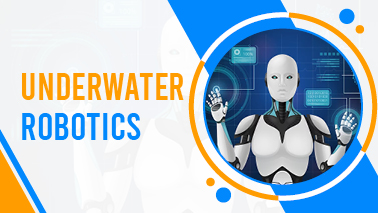
Underwater robotics is a specialized field of robotics focused on the design, development, and application of robots for underwater exploration, research, and various industrial tasks. These robots, often referred to as underwater autonomous vehicles (UAVs) or remotely operated vehicles (ROVs), are used for a wide range of underwater missions, from scientific exploration to commercial and military applications. Here are some key aspects and applications of underwater robotics:
Exploration and Mapping: Underwater robots are used to explore and map the ocean floor, underwater caves, and other submerged environments. They can create detailed 3D maps of underwater terrain, which is valuable for scientific research and navigation purposes.
Oceanography and Marine Biology: Scientists use underwater robots to collect data on water temperature, salinity, pressure, and biological samples. These robots enable researchers to study marine ecosystems, monitor ocean currents, and track the movements of marine species.
Search and Rescue: Underwater robots are employed in search and rescue operations to locate and recover objects or individuals in water bodies. They can access areas that are difficult or dangerous for human divers.
Underwater Archaeology: Archaeologists use ROVs to explore and document submerged shipwrecks, ancient ruins, and historical artifacts that are inaccessible to divers.
Oil and Gas Industry: ROVs are widely used in the oil and gas industry for tasks such as inspecting underwater pipelines, performing maintenance on offshore platforms, and assisting in underwater drilling operations.
Environmental Monitoring: Underwater robots help monitor and assess the health of marine environments. They can be equipped with sensors to measure water quality, pollution levels, and the impact of climate change on marine ecosystems.
Defense and Security: Military applications of underwater robots include mine detection and clearance, surveillance of naval installations, and the inspection of underwater structures and vessels.
Commercial Fishing: Autonomous underwater vehicles are used in commercial fishing for tasks such as locating fish shoals and assessing the condition of fishing gear.
Infrastructure Inspection: Underwater robots are employed to inspect and maintain underwater infrastructure such as bridges, dams, and submerged cables.
Scientific Research: Underwater robotics plays a crucial role in scientific expeditions, enabling researchers to study underwater geology, hydrothermal vents, marine biology, and more.
Key technologies and challenges in underwater robotics include robust communication systems for remote operation, advanced sensors for navigation and data collection, pressure-resistant materials and components, energy-efficient propulsion systems, and autonomous control algorithms capable of navigating in complex underwater environments.
Overall, underwater robotics contributes to our understanding of the world's oceans, enhances safety in underwater operations, and supports various industries in their efforts to explore, utilize, and protect underwater resources.
Tags
Mobile Robotics Conferences
Robotics Conferences 2024
Robotics Conferences 2024 Europe
Mechatronics Conferences 2024 USA
Artificial Intelligence Conferences
Robotics Conferences 2024 USA
Robotics Conferences 2024 Asia
Automation Conferences 2024 Europe
Robotic Technologies Conferences
Robotics in Healthcare Conferences
Mechatronics Conferences 2024 Europe
Mechatronics Conferences
Automation Conferences
Robotics and Well-Being Conferences
Disaster Robotics Conferences
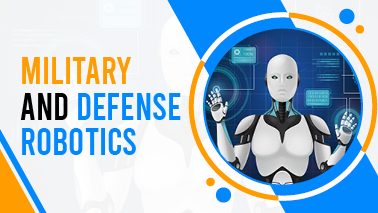
Military and defense robotics refer to the use of robotic systems and technologies for various applications within the armed forces and defense industries. These robotic systems are designed to enhance the capabilities of military personnel, improve mission success rates, and reduce the risks to human lives in challenging and often dangerous environments. Here are some key aspects and applications of military and defense robotics:
Unmanned Aerial Vehicles (UAVs): Also known as drones, UAVs are widely used for surveillance, reconnaissance, and intelligence-gathering missions. They can be armed for offensive operations or used for target identification.
Unmanned Ground Vehicles (UGVs): UGVs are ground-based robots designed for various tasks, including reconnaissance, explosive ordnance disposal (EOD), and logistics support. Some UGVs are remotely operated, while others are autonomous.
Unmanned Underwater Vehicles (UUVs): UUVs are used for underwater surveillance, mine detection and clearance, and submarine tracking. They can operate at great depths and in harsh underwater environments.
Robotic Exoskeletons: Exoskeletons provide soldiers with enhanced strength, endurance, and mobility. They can help carry heavy loads, reduce fatigue, and protect against injuries.
EOD Robots: Explosive ordnance disposal robots are used to handle and dispose of explosive devices safely. They can remotely investigate and neutralize suspicious objects, reducing the risk to EOD personnel.
Autonomous Vehicles: Autonomous ground vehicles and drones can be used for logistics and supply chain support, reducing the need for human drivers in potentially hazardous areas.
Sensors and Surveillance: Robotics play a vital role in incorporating advanced sensors, cameras, and surveillance equipment to monitor borders, secure perimeters, and detect threats.
Communication and Cybersecurity: Robotic systems can be used for secure communication, data encryption, and network defense to protect military operations from cyber threats.
Training and Simulation: Simulated environments and robotic training aids are used to train military personnel in various scenarios, improving readiness and decision-making skills.
Search and Rescue: In disaster relief and military operations, robots can assist in locating and rescuing personnel in hazardous or hard-to-reach areas.
Medical Robotics: Medical robots can be deployed in field hospitals and medical facilities to assist in surgery, diagnostics, and patient care during combat situations and humanitarian missions.
Aerial Refueling Drones: Drones equipped with refueling capabilities can extend the range and endurance of military aircraft, allowing for longer missions and reducing the need for manned tanker aircraft.
Challenges in military and defense robotics include ensuring the security and reliability of robotic systems, developing effective human-robot interfaces, addressing ethical and legal concerns surrounding autonomous weapons, and managing the costs associated with research, development, and maintenance.
While military and defense robotics offer significant advantages in terms of efficiency and safety, they also raise important ethical and strategic questions about the use of autonomous and semi-autonomous systems in warfare and conflict zones. International laws and agreements are continually evolving to address these concerns and regulate the use of military robots.
Tags
Smart Robotics Conferences
Robotic Technologies Conferences
Mechatronics Conferences 2024 Europe
Mobile Robotics Conferences
Mechatronics Conferences 2024 USA
Automation Conferences
Robotics Conferences 2024
Robotics Conferences
Automation Conferences 2024 Europe
Robotics Conferences 2024 Asia
Robotics and Well-Being Conferences
Disaster Robotics Conferences
Robotics in Healthcare Conferences
Automation Conferences 2024 Asia
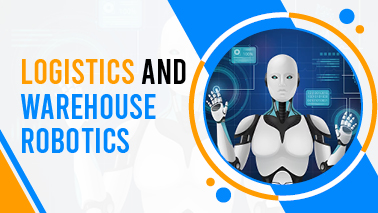
Logistics and Warehouse Robotics refer to the use of robotic technology and automation systems in the management, movement, and organization of goods within warehouses, distribution centers, and the broader supply chain. Due to their potential to boost the logistics and supply chain industry's productivity, quality, and cost-effectiveness, these technologies have grown significantly in relevance in recent years. These are some essential features of warehouse robots and logistics:
Material Handling Robots: Material Handling Robots are made to transport, lift, and move objects throughout a warehouse or distribution center. Robotic arms, automated guided vehicles, and autonomous mobile robots (AMRs) are a few examples. These machines may streamline the movement of products, cut down on labor, and eliminate mistakes.
Picking and Packing Robots: In warehouses, robots can be employed to select and pack things. To efficiently detect, grip, and pack objects, they make use of grasping mechanics, computer vision, and machine learning. These machines may function alone or in tandem with people.
Sorting and Conveyor Systems: Automated sorting systems, often integrated with conveyor belts and robotic arms, help streamline the process of sorting and routing packages or items to their designated locations. These systems are accurate and quick in handling large volumes of cargo.
Inventory management: Real-time inventory levels may be monitored and managed using robotics and automation technology. Regular inventory checks performed by drones and autonomous robots with sensors lower the possibility of shortages and overstock conditions.
Palletizing and Depalletizing: Robots are used to stack and unstack pallets, making it easier to load and unload goods in a warehouse. By automating the process, employees can handle pallets more quickly and with less physical effort.
Warehouse Management Systems (WMS): To coordinate the flow of items and give real-time data on inventory, order status, and performance metrics, warehouse management systems are frequently combined with robotics. As a result, warehouse operations are improved.
Safety and Collaboration: Making sure the safe interaction between robots and human workers is critical. Cobots, or collaborative robots, are made to function securely alongside people. Collisions may be detected and avoided using sensors, cameras, and other technology.
Robotic last-mile delivery: In the logistics sector, the final mile of the supply chain is sometimes the most expensive and difficult. To improve last-mile delivery procedures, delivery robots such as ground-based autonomous vehicles and drones are being investigated.
Data Analytics and Optimization: Robotics in shipping generate huge quantities of data, which can be analyzed to optimize warehouse layouts, order fulfillment processes, and inventory management strategies. In this data analysis, machine learning and AI algorithms are essential.
Environmental Benefits: By optimizing routes, cutting idle periods, and avoiding waste, the use of robotics in logistics can result in lower energy usage, lower emissions, and more sustainable operations.
Tags
Mechatronics Conferences 2024 USA
Industrial Robotics Conferences
Smart Robotics Conferences
Automation Conferences
Robotics and Well-Being Conferences
Disaster Robotics Conferences
Mechatronics Conferences
Medical Robotics Conferences
Robotics Conferences 2024 Asia
Robotics Conferences 2024 USA
Artificial Intelligence Conferences
Robotics in Healthcare Conferences
Robotics Conferences 2024
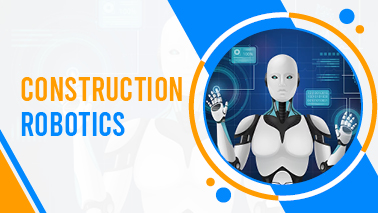
Construction Robotics is a field of robotics that focuses on the development and application of robotic technologies in the construction industry. These robots are designed to perform various tasks and functions within the construction process, with the aim of improving efficiency, safety, and productivity. Here are some key aspects of construction robotics:
Types of Construction Robots:
Benefits of Construction Robotics:
Challenges and Considerations:
Tags
Mechatronics Conferences 2024 USA
Robotics Conferences
Mobile Robotics Conferences
Robotics in Healthcare Conferences
Disaster Robotics Conferences
Robotic Technologies Conferences
Medical Robotics Conferences
Industrial Robotics Conferences
Mechatronics Conferences
Robotics Conferences 2024 USA
Automation Conferences 2024 Asia
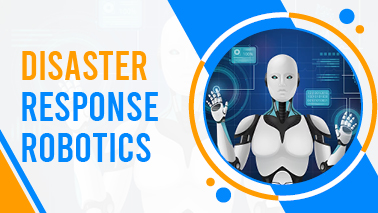
Disaster Response Robotics refers to the use of robotic technology and autonomous systems to assist in various aspects of disaster management and response efforts. These robots are designed to operate in hazardous or challenging environments where human intervention may be limited, dangerous, or impractical. The primary goal of disaster response robotics is to enhance the effectiveness and safety of disaster response operations. Here are some key aspects and applications of disaster response robotics:
Search and Rescue:
Hazardous Material Handling:
Infrastructure Inspection:
Communication Support:
Medical Assistance:
Mapping and Data Collection:
Evacuation Assistance:
Debris Removal:
Environmental Monitoring:
Human-Robot Collaboration:
Tags
Robotics Conferences 2024 Europe
Robotics Conferences 2024 USA
Automation Conferences 2024 Asia
Automation Conferences 2024 Europe
Robotics Conferences
Mechatronics Conferences 2024 USA
Mobile Robotics Conferences
Industrial Robotics Conferences
Mechatronics Conferences 2024 Europe
Robotics in Healthcare Conferences
Mechatronics Conferences
Medical Robotics Conferences
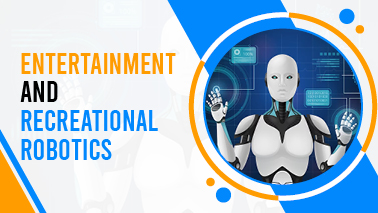
Entertainment and Recreational Robotics encompass a wide range of robotic systems and devices designed primarily for entertainment, leisure, and recreational purposes. These machines are designed to amuse people, get them involved in enjoyable activities, or improve their leisure time. Following are a few typical uses for amusement and recreational robotics:
Toy Robots: These are robotic toys designed for children and enthusiasts. Robot action figures, robot dogs, and robot dinosaurs are a few examples. For amusement and instructional purposes, they frequently include interactive features, sensors, and programming choices.
Robotic Games: Robots can be used in various types of games, such as robot soccer (RoboCup), robot sumo, or robot racing. These contests encourage robotics research while providing competitors and spectators with a fun and competitive environment.
Theme Park Robots: Amusement parks and theme parks often use robotic characters to entertain visitors. Animatronics, ride operators, and interactive characters who interact with park visitors to create immersive experiences are some examples of these robots.
Drones for Aerial Shows: Using drone technology, beautiful light shows have been produced in the night sky. For big crowds, coordinated drone performances with LED lights may provide breath-taking visual displays.
Robot Companions: Some robots are made to be friends, offering amusement and interacting with people. Robot dogs like Paro or social robots like Pepper are two examples of machines that provide emotional support and companionship to people.
Virtual Reality (VR) and Augmented Reality (AR) Integration: Robotics can be combined with VR and AR technologies to create complete entertainment experiences. Through robotic devices, users may interact and control virtual surroundings, increasing gaming and entertainment.
Robotic DJs and Musicians: Some robots are programmed to play musical instruments or mix music as DJs, providing live entertainment at events or venues. These machines may play on their own or with live musicians.
Educational Entertainment: Robotics is used in educational settings to engage students in science, technology, engineering, and mathematics (STEM) subjects. Robotics and programming kits like LEGO Mindstorms are well-liked educational and entertaining resources.
Robotic Art Installations: Artists frequently employ robots to produce interactive works of art that compel spectators in fresh and original ways. These installations may consist of robot-assisted painting, kinetic sculptures, and other things.
Robotic Sports and Competitions: Robots are pitted against one another in competitive and entertaining contests in activities like robot battles (e.g., BattleBots) and robot racing (e.g., Robot Wars). These contests display the engineering prowess and inventiveness of robot enthusiasts.
Robotic Simulators: Simulators using robotic motion platforms may provide gamers and enthusiasts an immersive experience. They are utilized in virtual attractions at amusement parks, flying simulators, and racing simulations.
Tags
Robotics Conferences 2024 Asia
Robotics Conferences
Industrial Robotics Conferences
Robotics and Well-Being Conferences
Mechatronics Conferences 2024 Europe
Robotics Conferences 2024 USA
Robotics in Healthcare Conferences
Smart Robotics Conferences
Automation Conferences 2024 Asia
Automation Conferences
Robotics Conferences 2024 Europe
Medical Robotics Conferences
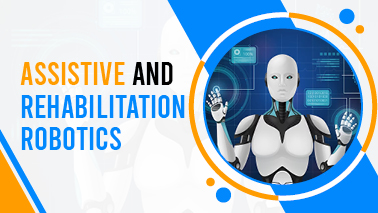
Helpful and Rehabilitative Two sectors that are closely connected to robotics work to enhance the freedom and quality of life of people with impairments, as well as those who are recuperating from accidents or surgery. Robotic technologies are used in these domains to supplement, replace, or help human skills in a variety of tasks and activities. An outline of both fields is given below:
1. Assistive Robotics:
Assistive robotics focuses on developing robotic systems and devices to assist people with disabilities in their daily lives. These tools are made to improve the independence, movement, and communication of people who have cognitive, sensory, or physical disabilities. Typical illustrations of assistive robots include:
2. Rehabilitation Robotics:
The area of rehabilitation robotics is concerned with using robotic technology to physical therapy and rehabilitation. These robots help people who have undergone surgery or been injured regain lost function, strength, and movement. Rehabilitation robotics' principal uses include:
The benefits of assistive and rehabilitation robotics include increased freedom for people with impairments, more successful and focused patient rehabilitation, less stress on caregivers, and an overall higher quality of life.
Tags
Industrial Robotics Conferences
Mobile Robotics Conferences
Robotics Conferences 2024 Europe
Mechatronics Conferences 2024 Europe
Robotic Technologies Conferences
Automation Conferences 2024 Asia
Artificial Intelligence Conferences
Robotics Conferences 2024 USA
Automation Conferences 2024 Europe
Smart Robotics Conferences
Robotics in Healthcare Conferences
Robotics Conferences 2024 Asia
Disaster Robotics Conferences
Automation Conferences
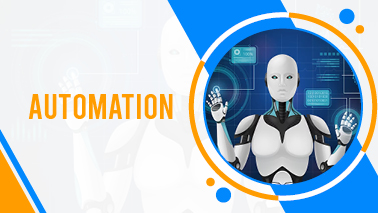
Automation is the use of technology and software to carry out operations with little or no human involvement. Automation aims to improve productivity, decrease human error, free up time, and frequently reduce expenses. Many different disciplines and businesses, including manufacturing, business operations, information technology, and more, can benefit from automation.
Key components of Automation include:
Types of Automation include:
Automation has the potential to significantly transform industries and the workforce. While automation may result in greater productivity and cost savings, it may also raise concerns about job displacement and the requirement for individuals to acquire new skills to adapt to shifting roles in a society that is becoming more and more automated.
Tags
Robotic Technologies Conferences
Automation Conferences 2024 Asia
Artificial Intelligence Conferences
Robotics Conferences 2024
Disaster Robotics Conferences
Mechatronics Conferences
Mechatronics Conferences 2024 Europe
Robotics Conferences
Industrial Robotics Conferences
Robotics Conferences 2024 USA
Robotics in Healthcare Conferences
Smart Robotics Conferences
Robotics and Well-Being Conferences
Mobile Robotics Conferences
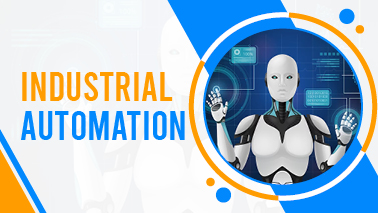
Industrial Automation refers to the use of control systems, such as computers or robots, to handle different industrial processes and tasks with minimal human intervention. This technology is employed across various industries to enhance efficiency, productivity, and safety in manufacturing and other operations. Here are some key aspects and components of industrial automation:
Control Systems: Automation relies on control systems to regulate and monitor industrial processes. These systems can range from simple relay logic control to advanced programmable logic controllers (PLCs) or distributed control systems (DCS).
Sensors and Actuators: Sensors collect data about the state of a process or machine, while actuators are responsible for making changes based on the control system's instructions. Common sensors include temperature sensors, pressure sensors, and proximity sensors, while actuators can be motors, valves, or pumps.
Human-Machine Interface (HMI): Automation systems often have an interface that allows operators and engineers to interact with the system. This can include graphical user interfaces (GUIs) and touchscreens, making it easier to monitor and control processes.
Programmable Logic Controllers (PLCs): PLCs are rugged industrial computers used to control various manufacturing processes, such as assembly lines, conveyor systems, and robotic operations. They use ladder logic or other programming languages to execute tasks.
Robotics: Industrial robots are versatile machines used for tasks like welding, painting, material handling, and assembly. They can be programmed to perform precise and repetitive tasks, reducing the need for human labor.
SCADA (Supervisory Control and Data Acquisition): SCADA systems are used to monitor, gather, and process real-time data from various sensors and control systems. They are commonly used in industries like energy, water treatment, and manufacturing.
Machine Vision: Machine vision systems use cameras and image processing algorithms to inspect and analyze products for defects, read labels, and perform other visual tasks. This technology is essential for quality control and sorting applications.
Industrial Communication Protocols: Various communication protocols, such as Ethernet/IP, Profinet, and Modbus, enable devices and systems to exchange data efficiently in an industrial environment.
IoT and Industry 4.0: The Internet of Things (IoT) and Industry 4.0 concepts have revolutionized industrial automation by connecting devices and systems, enabling data-driven decision-making, predictive maintenance, and improved overall efficiency.
Safety Systems: Industrial automation systems incorporate safety features to protect workers and equipment. Safety sensors, emergency stop buttons, and safety interlock systems are examples of safety measures.
Energy Management: Automation can help optimize energy consumption in industrial facilities by regulating processes based on energy-efficient parameters.
Predictive Maintenance: Using sensors and data analysis, automation systems can predict when equipment is likely to fail, allowing for timely maintenance and reducing downtime.
Industrial Automation has a profound impact on various industries, leading to increased productivity, higher product quality, reduced labor costs, and improved workplace safety. As technology continues to advance, industrial automation will play an even more significant role in shaping the future of manufacturing and other industrial sectors.
Tags
Artificial Intelligence Conferences
Robotics Conferences
Robotics in Healthcare Conferences
Mechatronics Conferences 2024 Europe
Automation Conferences 2024 Europe
Smart Robotics Conferences
Mechatronics Conferences
Robotics Conferences 2024 Asia
Disaster Robotics Conferences
Robotics Conferences 2024 Europe
Industrial Robotics Conferences
Robotics Conferences 2024
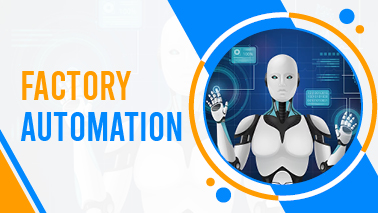
Factory Automation refers to the use of various control systems, software, and technologies to replace or augment human labor and decision-making in industrial processes. The primary goal of factory automation is to improve efficiency, productivity, quality, and safety in manufacturing and production processes. It involves the integration of different technologies and systems to streamline and optimize the production workflow. Here are some key aspects and components of factory automation:
Sensors and Actuators: Sensors are devices that can detect various parameters such as temperature, pressure, humidity, and more. Actuators, on the other hand, are responsible for performing physical actions based on the information gathered by sensors. These are fundamental components of automation as they enable machines to perceive and interact with their environment.
PLC (Programmable Logic Controller): PLCs are industrial computers designed to control manufacturing processes. They can be programmed to perform specific tasks, monitor inputs from sensors, and make decisions based on pre-defined logic. PLCs are commonly used for tasks like controlling conveyor belts, robotic arms, and assembly lines.
Robots and Robotic Systems: Industrial robots are automated machines designed to perform tasks with precision and repeatability. They are used for various applications, including welding, painting, pick-and-place operations, and more. Collaborative robots (cobots) are a subset of industrial robots designed to work alongside humans safely.
SCADA (Supervisory Control and Data Acquisition): SCADA systems provide a centralized control and monitoring platform for industrial processes. They collect data from sensors and devices in real-time, display it to operators, and allow for remote control and management of various industrial operations.
HMI (Human-Machine Interface): HMIs are graphical interfaces that allow operators to interact with and control automation systems. They provide a user-friendly way to monitor processes, make adjustments, and receive alerts or notifications.
PLM (Product Lifecycle Management): PLM software is used to manage the entire lifecycle of a product, from concept and design to production and maintenance. It helps ensure product quality, manage changes, and improve collaboration among different departments involved in the product's lifecycle.
MES (Manufacturing Execution System): MES software bridges the gap between enterprise-level systems (like ERP) and the shop floor. It helps plan, schedule, track, and analyze manufacturing operations in real-time, providing insights into production efficiency and quality.
IoT (Internet of Things): IoT technology enables the connection of various devices and sensors to the internet, allowing for remote monitoring and control of industrial processes. It's often used to collect and analyze large amounts of data for predictive maintenance and process optimization.
AI and Machine Learning: These technologies are increasingly being used in factory automation to make systems smarter. AI and machine learning can analyze data, predict maintenance needs, optimize production schedules, and even improve quality control.
3D Printing and Additive Manufacturing: These technologies are used for rapid prototyping and production of complex components. They can be integrated into automated production lines for on-demand manufacturing.
Factory Automation has numerous benefits, including increased efficiency, reduced production costs, improved product quality, enhanced safety, and the ability to respond quickly to changing market demands. It plays a crucial role in modern manufacturing across various industries, from automotive and electronics to pharmaceuticals and food production.
Tags
Industrial Robotics Conferences
Robotics Conferences 2024
Disaster Robotics Conferences
Smart Robotics Conferences
Robotic Technologies Conferences
Mechatronics Conferences
Mechatronics Conferences 2024 Europe
Automation Conferences 2024 Asia
Robotics Conferences 2024 Asia
Mechatronics Conferences 2024 USA
Robotics Conferences
Automation Conferences 2024 Europe
Artificial Intelligence Conferences
Robotics Conferences 2024 Europe
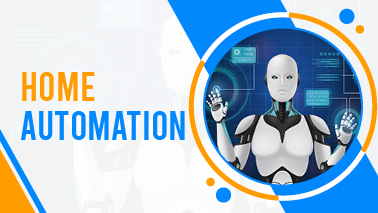
Home Automation refers to the use of technology to control and automate various household tasks and functions. Home automation enables homeowners to remotely monitor and manage a variety of appliances and systems in their homes, which has the primary benefit of making daily living more comfortable, effective, and secure. Here are a few significant features of home automation:
Smart Devices: Home automation relies on smart devices that can connect to the internet and communicate with each other. These gadgets include smart appliances, speakers, lighting, locks, cameras, thermostats, and more.
Central Control: Homeowners typically use a central control hub or a smartphone app to manage and control their smart devices. These hubs or applications offer a simple user interface for task scheduling and programming.
Voice Control: Many home automation systems are voice assistant-compatible, including those powered by Apple HomeKit, Google Assistant, and Amazon Alexa. This enables voice commands to be used for device control.
Security: With features like smart doorbells, cameras, motion detectors, and smart locks, home automation may improve house security. Remote home monitoring and alarms are both available to users.
Energy Efficiency: By tailoring temperature and illumination depending on user preferences and occupancy, smart thermostats and lighting systems may assist minimize energy use.
Convenience: Routine chores like turning on/off lights, adjusting temperatures, or even pouring coffee in the morning may be automated with home automation, making daily living more convenient.
Customization: Users can design their own automation schedules and routines to suit their unique requirements. You could, for instance, program.
Integration: A variety of smart systems and devices can be integrated into several home automation platforms. In a single ecosystem, gadgets from multiple manufacturers may coexist in perfect harmony.
Remote Access: Homeowners can remotely access and control their smart devices from anywhere with an internet connection. This is especially helpful if you want to make changes or keep an eye on your house while you're gone.
Scalability: Over time, home automation systems can grow. You may begin with a small number of smart devices and add more as you go.
Common examples of home automation include:
Home automation offers a variety of advantages, including energy savings, enhanced security, and improved convenience. It may be tailored to meet individual tastes and lifestyles. However, it's critical to take security and privacy into account.
Tags
Robotics Conferences 2024
Mobile Robotics Conferences
Mechatronics Conferences 2024 Europe
Mechatronics Conferences
Robotics and Well-Being Conferences
Disaster Robotics Conferences
Medical Robotics Conferences
Robotics Conferences 2024 USA
Industrial Robotics Conferences
Mechatronics Conferences 2024 USA
Automation Conferences 2024 Asia
Robotics in Healthcare Conferences
Automation Conferences 2024 Europe
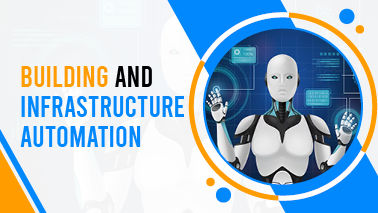
Building and Infrastructure Automation involves the use of technology and systems to enhance the efficiency, safety, and functionality of buildings and physical infrastructure. This may apply to a wide range of applications, including complicated construction projects like bridges and transportation networks as well as smart homes and office buildings. The following are significant elements and features of infrastructure and building automation:
Smart Building Systems:
Smart Home Automation:
Commercial Automation:
Infrastructure Surveillance:
Analytics and Data:
Remote Control and Management:
Energy Efficiency:
Sustainability:
Interoperability and Integration:
Predictive analytics and upkeep:
Safety:
Regulatory Compliance:
Cost Savings:
User Experience:
Automation of buildings and infrastructure is a topic that is quickly developing thanks to developments in IoT, AI, and networking technologies. It is a crucial factor in the creation of contemporary infrastructure since it offers several advantages in terms of efficiency, sustainability, and safety.
Tags
Smart Robotics Conferences
Artificial Intelligence Conferences
Robotics Conferences 2024 Europe
Disaster Robotics Conferences
Robotics and Well-Being Conferences
Mechatronics Conferences 2024 USA
Mobile Robotics Conferences
Robotics in Healthcare Conferences
Robotics Conferences 2024
Medical Robotics Conferences
Automation Conferences 2024 Asia
Automation Conferences
Robotic Technologies Conferences
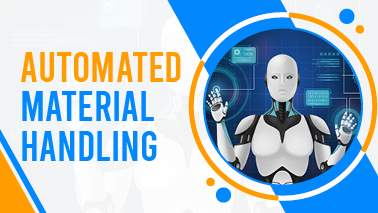
Automated Material Handling (AMH) refers to the use of various automated systems and technologies to efficiently and safely move, control, store, and protect materials within a manufacturing or distribution facility, warehouse, or other industrial settings. The primary goal of AMH is to improve the overall efficiency, accuracy, and productivity of material handling processes while reducing labor costs and the potential for errors and accidents. Some of the key components and technologies associated with automated material handling include:
Conveyors: Conveyors are a fundamental component of AMH systems. They use belts, rollers, or other mechanisms to move goods from one location to another within a facility. Conveyors can be used for various purposes, such as transporting raw materials, finished products, or components between different production or storage areas.
Automated Guided Vehicles (AGVs): AGVs are mobile robots equipped with sensors and navigation systems that allow them to move autonomously within a facility. They are often used for transporting materials or products between different points, such as from a production line to a storage area.
Automated Storage and Retrieval Systems (AS/RS): AS/RS systems use automated cranes, shuttles, or robotic arms to store and retrieve items from racks or shelves. These systems maximize storage density and retrieval speed while reducing the need for manual labor.
Robotics: Industrial robots are employed for various material handling tasks, including picking and placing items, sorting, packaging, and palletizing. These robots are often programmed to work alongside human workers, enhancing efficiency and safety.
Material Handling Robots: Specialized robots designed exclusively for material handling tasks, such as picking items from conveyor belts, can be used to streamline processes in warehouses and distribution centers.
Warehouse Management Systems (WMS): WMS software is used to manage and optimize warehouse operations, including inventory tracking, order fulfillment, and routing for material handling equipment.
Palletizing and Depalletizing Systems: These systems automate the loading and unloading of pallets, improving efficiency and reducing the risk of workplace injuries.
Sortation Systems: Automated sortation systems use conveyors, diverters, and sensors to categorize and route items to their designated destinations, such as specific shipping lanes or storage areas.
Automated Packaging Systems: Machines that automate the packaging process, including filling containers, sealing packages, and labeling, contribute to faster and more consistent product handling.
Automated Inspection Systems: Vision systems and other automated inspection technologies are used to check the quality and integrity of products during the material handling process.
Benefits of Automated Material Handling:
Automated Material Handling plays a crucial role in modern manufacturing, logistics, and distribution, helping businesses streamline their operations and stay competitive in today's rapidly evolving market.
Tags
Robotics and Well-Being Conferences
Artificial Intelligence Conferences
Smart Robotics Conferences
Robotics in Healthcare Conferences
Automation Conferences
Disaster Robotics Conferences
Robotics Conferences
Automation Conferences 2024 Asia
Robotics Conferences 2024
Mobile Robotics Conferences
Robotics Conferences 2024 Asia
Mechatronics Conferences 2024 USA
Mechatronics Conferences 2024 Europe
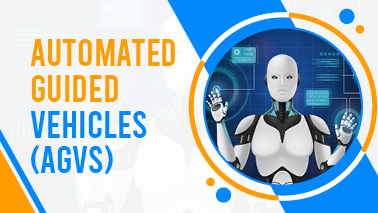
Automated Guided Vehicles (AGVs) are specialized types of mobile robots designed for material handling and transportation tasks within industrial settings. They are equipped with various sensors, control systems, and navigation technology to autonomously move goods from one location to another. AGVs have been widely adopted in industries such as manufacturing, warehousing, logistics, and healthcare due to their efficiency, accuracy, and ability to operate in environments where human presence might be limited or safety is a concern.
Here are some key features and aspects of AGVs:
Navigation: AGVs use different methods for navigation, including laser-based navigation, magnetic tape guidance, vision-based navigation, and inertial navigation systems. These methods allow them to follow predetermined paths, avoid obstacles, and make precise movements.
Payload Capacity: AGVs come in various sizes and configurations, with different payload capacities to handle a wide range of materials, from small components to heavy loads.
Safety: Safety is a paramount concern when deploying AGVs in industrial environments. AGVs are equipped with sensors and safety systems to detect obstacles, workers, or other objects in their path. They can slow down or stop to avoid collisions and ensure the safety of both equipment and personnel.
Flexibility: AGVs can be programmed to perform various tasks, including material transportation, pallet handling, assembly line feeding, and more. They are highly adaptable and can be reconfigured or reprogrammed to accommodate changing production needs.
Communication: AGVs are often integrated with warehouse management systems (WMS) or manufacturing execution systems (MES) to receive task assignments, update their status, and communicate with other equipment and software in the production process.
Energy Efficiency: AGVs are designed to operate efficiently, with options for battery-powered or wired electric systems. Many modern AGVs are equipped with smart charging technology to optimize energy consumption and ensure they are always ready for operation.
Cost Savings: Implementing AGVs can lead to cost savings in terms of labor, as they can work around the clock without breaks. They also reduce the risk of accidents and errors associated with manual material handling.
Scalability: AGV fleets can be scaled up or down as needed, making them suitable for both small and large manufacturing or warehouse facilities.
Maintenance: Regular maintenance is essential to keep AGVs in optimal working condition. Routine inspections and servicing help prevent breakdowns and prolong the lifespan of the equipment.
Integration with Industry 4.0: AGVs are often part of Industry 4.0 initiatives, where they play a crucial role in creating smart, interconnected manufacturing and logistics systems. They can provide real-time data and contribute to data-driven decision-making processes.
In summary, AGVs are autonomous mobile robots that play a significant role in streamlining material handling and transportation processes in various industrial settings. Their ability to operate autonomously, improve safety, and increase efficiency makes them valuable assets in modern manufacturing and logistics operations.
Tags
Industrial Robotics Conferences
Medical Robotics Conferences
Smart Robotics Conferences
Automation Conferences 2024 Europe
Automation Conferences
Robotics Conferences
Robotics Conferences 2024 USA
Robotics Conferences 2024 Europe
Robotic Technologies Conferences
Robotics and Well-Being Conferences
Mobile Robotics Conferences
Mechatronics Conferences
Mechatronics Conferences 2024 Europe
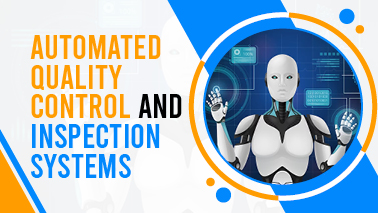
Automated Quality Control and Inspection Systems (AQCI) are advanced technological solutions used in various industries to ensure the quality and consistency of products and processes. These systems utilize a combination of hardware and software components to detect defects, deviations, or irregularities in products, components, or processes. AQCI systems play a critical role in improving product quality, reducing defects, and minimizing production costs. Here are some key aspects of Automated Quality Control and Inspection Systems:
Sensors and Cameras: AQCI systems are equipped with various sensors and cameras, including optical, thermal, X-ray, and infrared sensors, to capture data and images of products and processes. These sensors are essential for collecting information about the item being inspected.
Data Acquisition: The sensors and cameras capture data and images in real-time. This data is then processed and analyzed by the system's software to identify defects or deviations from the desired quality standards.
Machine Learning and Computer Vision: Many AQCI systems leverage machine learning and computer vision algorithms to analyze data and images. These algorithms can recognize patterns, anomalies, and defects with high accuracy, even in complex and variable environments.
Defect Detection: One of the primary functions of AQCI systems is defect detection. They can identify surface defects, dimensional variations, and other quality-related issues in products. For example, in manufacturing, these systems can detect cracks, scratches, misalignments, or missing components.
Measurement and Inspection: AQCI systems can measure and inspect various parameters, such as dimensions, tolerances, color, texture, and more. They ensure that products meet precise specifications and standards.
Real-time Feedback: AQCI systems provide real-time feedback to operators or automated control systems. This allows for immediate adjustments and corrections in the production process, reducing the likelihood of producing defective items.
Data Logging and Reporting: These systems often store inspection data and generate detailed reports. This information can be valuable for process improvement, quality assurance, and compliance documentation.
Integration with Automation: AQCI systems can be integrated into manufacturing and production lines, working seamlessly with robots, conveyors, and other automation equipment. This integration allows for continuous monitoring and inspection throughout the production process.
Non-destructive Testing (NDT): In industries like aerospace and automotive, AQCI systems often incorporate non-destructive testing techniques like X-ray or ultrasound to inspect the internal structures of components without causing damage.
Customization: AQCI systems can be customized to meet the specific needs of different industries and applications. They can adapt to different product types, sizes, and quality standards.
Quality Assurance and Compliance: These systems play a crucial role in ensuring that products meet regulatory requirements and industry standards. They can help manufacturers avoid costly recalls and legal issues.
Cost Savings: By reducing the number of defective products and optimizing production processes, AQCI systems can lead to significant cost savings over time.
Industries that benefit from AQCI systems include manufacturing (automotive, electronics, pharmaceuticals, food and beverages, etc.), aerospace, healthcare (medical device manufacturing), and many others where quality and consistency are paramount.
Tags
Smart Robotics Conferences
Artificial Intelligence Conferences
Robotics Conferences 2024 Europe
Robotic Technologies Conferences
Disaster Robotics Conferences
Robotics Conferences 2024
Mechatronics Conferences
Automation Conferences 2024 Asia
Automation Conferences 2024 Europe
Mobile Robotics Conferences
Mechatronics Conferences 2024 Europe
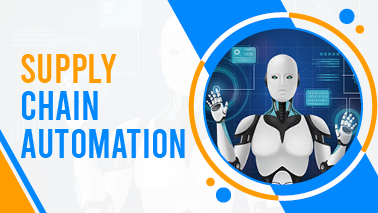
Supply Chain Automation refers to the use of technology and software to streamline and optimize various processes within the supply chain, from procurement and production to distribution and logistics. Automation in the supply chain aims to improve efficiency, reduce costs, enhance accuracy, and ultimately deliver better customer satisfaction. Here are some key aspects of supply chain automation:
Order Processing and Management: Automation tools can handle order placement, processing, and tracking. This includes order confirmation, inventory checks, and updating customers on order status.
Inventory Management: Automated systems can monitor inventory levels in real-time, reorder products when they reach a certain threshold, and provide insights into demand forecasting.
Demand Forecasting: Advanced algorithms and machine learning models can analyze historical data and market trends to predict future demand more accurately, helping in stock optimization.
Supplier Relationship Management: Automation can assist in managing supplier relationships by handling communications, order placement, and tracking supplier performance.
Warehouse Automation: Technologies like robotics and automated guided vehicles (AGVs) can optimize warehouse operations by automating picking, packing, and shipping processes, leading to faster order fulfillment.
Transportation Management: Automated routing and scheduling software can optimize the movement of goods, reduce transportation costs, and ensure timely deliveries.
IoT (Internet of Things) Sensors: Sensors can be placed on products, equipment, and vehicles to provide real-time data on location, condition, and performance, allowing for better tracking and decision-making.
Blockchain: Blockchain technology can enhance transparency and traceability in the supply chain by securely recording and verifying transactions and product movements.
Machine Learning and AI: Machine learning algorithms can be used to analyze large datasets, identify patterns, and make predictions to improve supply chain efficiency and decision-making.
Data Analytics: Advanced analytics tools can provide insights into supply chain performance, helping companies identify bottlenecks, optimize processes, and reduce costs.
E-commerce Automation: For companies involved in e-commerce, automation can manage online order processing, inventory updates, and customer notifications seamlessly.
Risk Management: Automation can be used to assess and mitigate risks in the supply chain, such as disruptions in the form of natural disasters, political events, or economic fluctuations.
Compliance and Documentation: Automation can ensure that all regulatory and compliance requirements are met by generating and managing documentation and reports automatically.
Customer Service: Chatbots and AI-driven customer service solutions can handle customer inquiries, track orders, and provide updates, enhancing the overall customer experience.
Returns Management: Automation can streamline the returns process, making it more efficient and cost-effective for both customers and businesses.
Implementing Supply Chain Automation requires a strategic approach, investment in technology, and ongoing monitoring and refinement. While it can deliver significant benefits, it's essential to consider the unique needs and challenges of your supply chain when implementing automation solutions. Additionally, keeping up with emerging technologies and industry trends is crucial to stay competitive in the ever-evolving supply chain landscape.
Tags
Mobile Robotics Conferences
Robotics Conferences 2024 Europe
Mechatronics Conferences 2024 Europe
Mechatronics Conferences 2024 USA
Medical Robotics Conferences
Robotics in Healthcare Conferences
Robotics and Well-Being Conferences
Artificial Intelligence Conferences
Robotics Conferences 2024 Asia
Industrial Robotics Conferences
Automation Conferences 2024 Asia
Robotics Conferences 2024
Disaster Robotics Conferences
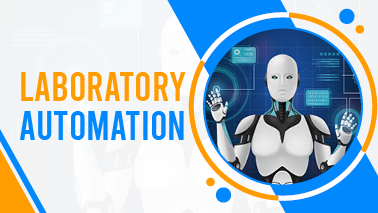
Laboratory Automation refers to the use of technology and equipment to perform scientific experiments, tests, and data analysis with minimal human intervention. It is a critical component of modern research and diagnostics, offering numerous advantages such as increased efficiency, accuracy, reproducibility, and the ability to handle large volumes of samples and data. Here are some key aspects and benefits of laboratory automation:
Workflow Automation: Laboratory automation systems streamline and automate various laboratory processes, including sample preparation, data collection, analysis, and reporting. This reduces the potential for human error and allows researchers to focus on more complex tasks.
High Throughput: Automation can significantly increase the throughput of experiments and tests, allowing laboratories to process a larger number of samples in a shorter amount of time. This is particularly important in fields such as genomics, drug discovery, and clinical diagnostics.
Precision and Accuracy: Automated systems are highly precise and consistent, minimizing variations between experiments or tests. This is crucial for obtaining reliable and reproducible results.
Sample Handling: Automation can handle samples more efficiently, ensuring proper labeling, tracking, and handling of specimens. It reduces the risk of contamination and sample mix-up.
Data Management: Laboratory automation often includes software for data management and analysis. This can help scientists organize, store, and analyze large datasets more effectively.
Reduced Labor Costs: While there may be an initial investment in automation equipment, it can lead to significant long-term cost savings by reducing the need for manual labor and the associated human resource expenses.
Safety: Automation can improve laboratory safety by handling hazardous materials and processes, reducing the exposure of researchers to potentially harmful substances.
Flexibility: Many laboratory automation systems are designed to be modular and adaptable, allowing researchers to customize and reconfigure them for different experiments or assays.
Conservation of Resources: Automation can help conserve valuable resources such as reagents, consumables, and energy by optimizing processes and reducing waste.
Remote Monitoring: Some automated systems can be monitored and controlled remotely, which is especially useful for large-scale or high-security laboratories.
Examples of laboratory automation include robotic liquid handling systems, automated pipetting machines, high-throughput screening systems, and integrated robotic workstations. These technologies are commonly used in various scientific fields, including molecular biology, chemistry, pharmacology, and clinical diagnostics.
Tags
Robotics in Healthcare Conferences
Mobile Robotics Conferences
Robotics and Well-Being Conferences
Automation Conferences
Mechatronics Conferences 2024 Europe
Robotics Conferences
Disaster Robotics Conferences
Mechatronics Conferences
Automation Conferences 2024 Europe
Robotics Conferences 2024 Europe
Robotics Conferences 2024
Medical Robotics Conferences
Mechatronics Conferences 2024 USA
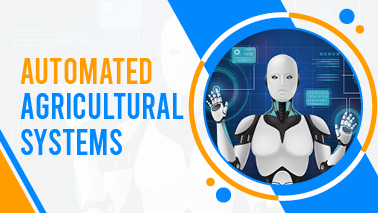
Automated Agricultural Systems, often referred to as precision agriculture or smart farming, are modern farming techniques that utilize technology and automation to optimize various aspects of farming operations. These systems aim to increase efficiency, reduce resource wastage, and improve crop yields and quality. Here are some key components and aspects of automated agricultural systems:
Data Collection and Sensors: Automated agriculture relies heavily on data collection. Various sensors, such as soil moisture sensors, weather stations, and GPS technology, are used to gather data about soil conditions, weather patterns, and crop health.
Remote Sensing: Satellite and drone technology are used for remote sensing to monitor large agricultural areas. These tools provide high-resolution images and data about crop health, pest infestations, and other factors affecting crop growth.
Data Analysis and Decision Support: Advanced data analytics and machine learning algorithms process the collected data to provide insights and recommendations. Farmers can make informed decisions based on this analysis, such as when to irrigate, fertilize, or apply pesticides.
Automated Machinery: Automation is applied to various farm machinery, such as tractors, harvesters, and drones. These machines can be equipped with GPS and autonomous navigation systems to perform tasks precisely and efficiently.
Precision Planting: Automated systems can precisely plant seeds at optimal spacing and depth, leading to uniform crop growth and improved yields.
Irrigation Management: Smart irrigation systems use data from soil moisture sensors and weather forecasts to control the timing and amount of irrigation, reducing water wastage and ensuring optimal soil moisture levels.
Crop Monitoring: Automated systems continuously monitor crop health and growth. If any issues are detected, such as pest infestations or nutrient deficiencies, automated alerts can be sent to farmers for timely intervention.
Crop Protection: Drones equipped with cameras and sensors can monitor for pests and diseases. Automated pest control systems may use drones to apply targeted treatments, reducing the need for broad-spectrum pesticides.
Livestock Management: In addition to crop farming, automated agricultural systems can be applied to livestock management. This includes automated feeding systems, health monitoring, and tracking animal movements.
Supply Chain Management: Automation can also be extended to the post-harvest phase, including sorting, packaging, and logistics, to streamline the supply chain and reduce post-harvest losses.
Energy Efficiency: Implementing automation in agriculture can lead to more energy-efficient practices. For example, automated machinery can optimize routes, reducing fuel consumption.
Environmental Sustainability: Automated agricultural systems can help reduce the environmental impact of farming by minimizing resource usage, reducing chemical applications, and optimizing land usage.
Data Security and Connectivity: With the increased use of automation and data collection, there is a need for robust data security measures and reliable connectivity in rural areas to ensure the seamless operation of these systems.
Cost Efficiency: While the initial investment in automated agricultural systems can be significant, the long-term benefits often include reduced operational costs, increased productivity, and higher profitability.
Overall, automated agricultural systems represent a technological shift in farming practices, allowing farmers to make more precise and data-driven decisions, conserve resources, and improve the sustainability and profitability of agriculture.
Tags
Mechatronics Conferences
Disaster Robotics Conferences
Robotics in Healthcare Conferences
Artificial Intelligence Conferences
Robotics Conferences 2024
Robotics Conferences 2024 Europe
Medical Robotics Conferences
Mechatronics Conferences 2024 Europe
Automation Conferences 2024 Europe
Robotics Conferences 2024 USA
Mobile Robotics Conferences
Robotics Conferences 2024 Asia
Automation Conferences
Automation Conferences 2024 Asia
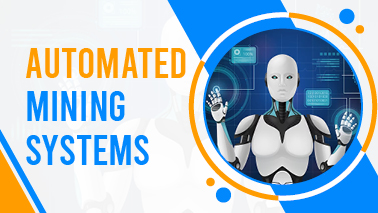
Automated Mining Systems refer to the use of advanced technology and machinery to perform various mining tasks with minimal human intervention. These systems leverage robotics, artificial intelligence, and sensor technologies to increase safety, efficiency, and productivity in mining operations. Here are some key components and aspects of automated mining systems:
Autonomous Vehicles: Automated mining often involves the use of autonomous vehicles, such as self-driving trucks and drill rigs. These vehicles are equipped with sensors, GPS, and advanced algorithms to navigate and operate safely within the mining site.
Remote Operation Centers: Many mining companies have established remote operation centers where operators can monitor and control mining equipment from a distance. This reduces the need for on-site personnel and enhances safety.
Drone Technology: Drones are used for various tasks in mining, including surveying, mapping, and monitoring. They can provide real-time data and imagery to help optimize operations.
Sensors and IoT: Sensors are placed on equipment, conveyor belts, and other critical areas of the mine to collect data on factors such as temperature, vibration, and equipment health. The Internet of Things (IoT) technology allows for real-time data analysis and predictive maintenance.
Artificial Intelligence: AI algorithms are used for tasks like ore grade estimation, predictive maintenance, and equipment optimization. Machine learning models can analyze vast datasets to identify patterns and improve decision-making.
Robotics: Mining robots are designed to perform tasks in hazardous or inaccessible areas of the mine. These robots can be used for tasks like rock breaking, maintenance, and inspection.
Automated Drilling and Blasting: Automated drilling and blasting systems use precision technology to optimize drilling and explosives placement, reducing waste and increasing efficiency.
Advanced Data Analytics: Mining companies utilize big data analytics to gain insights into their operations. This includes analyzing data from sensors, drones, and other sources to optimize processes and reduce costs.
Safety Improvements: Automation can significantly improve safety in mining by reducing the exposure of workers to hazardous conditions. Robots and autonomous vehicles can perform tasks in areas that may be too dangerous for humans.
Environmental Benefits: Automated systems can help minimize the environmental impact of mining by optimizing resource extraction, reducing waste, and improving energy efficiency.
Remote and Unmanned Operations: Some mining operations are entirely unmanned, with remote monitoring and control from a central location. This can be especially useful in remote or inhospitable environments.
Maintenance and Reliability: Predictive maintenance systems use data and AI to schedule maintenance before equipment fails, reducing downtime and maintenance costs.
Automated Mining Systems offer numerous benefits, including increased safety, reduced labor costs, improved productivity, and better resource utilization. However, their implementation also poses challenges, including the need for significant capital investment, potential job displacement, and the requirement for a skilled workforce to operate and maintain these advanced technologies. Nevertheless, as technology continues to advance, automated mining systems are likely to play an increasingly important role in the mining industry.
Tags
Robotics Conferences 2024 Asia
Automation Conferences 2024 Asia
Industrial Robotics Conferences
Mobile Robotics Conferences
Robotics Conferences 2024 USA
Automation Conferences
Disaster Robotics Conferences
Robotic Technologies Conferences
Mechatronics Conferences 2024 Europe
Medical Robotics Conferences
Robotics Conferences 2024 Europe
Robotics Conferences
Artificial Intelligence Conferences
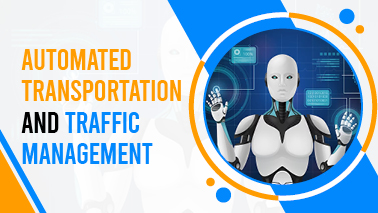
Automated Transportation and Traffic Management refer to the use of advanced technologies and automation to enhance the efficiency, safety, and sustainability of transportation systems and the management of traffic flows. These innovations aim to reduce congestion, improve mobility, and minimize environmental impacts in urban and rural areas. Here are some key aspects and technologies associated with automated transportation and traffic management:
Connected Vehicles: Connected vehicle technology enables vehicles to communicate with each other and with infrastructure elements like traffic lights and road sensors. This communication can help optimize traffic flow, prevent accidents, and improve overall safety. V2V (Vehicle-to-Vehicle) and V2I (Vehicle-to-Infrastructure) communication are essential components of this system.
Autonomous Vehicles (AVs): Autonomous vehicles are self-driving cars that use various sensors, cameras, lidar, and artificial intelligence to navigate and make driving decisions. AVs have the potential to reduce accidents, increase road capacity, and improve transportation access for people with disabilities.
Traffic Management Systems: Advanced traffic management systems use real-time data from sensors and cameras to monitor traffic conditions. They can adjust traffic signal timing, reroute traffic, and provide real-time information to drivers to optimize traffic flow.
Predictive Analytics: Predictive analytics algorithms use historical and real-time traffic data to forecast congestion and traffic patterns. Transportation authorities can use these insights to implement proactive measures to alleviate congestion and improve traffic management.
Smart Infrastructure: Smart infrastructure includes sensors embedded in roads, bridges, and traffic signs to collect data on road conditions, traffic volume, and environmental factors. This data helps in real-time decision-making and maintenance planning.
Intelligent Transportation Systems (ITS): ITS encompasses a wide range of technologies and strategies to improve transportation efficiency. This includes electronic toll collection, dynamic message signs, and adaptive traffic signal systems.
Traffic Simulation and Modeling: Traffic engineers use computer simulations and modeling to predict the impact of different transportation strategies and infrastructure changes before implementing them. This helps optimize designs and assess potential outcomes.
Traffic Apps and Navigation Services: Mobile apps and navigation systems provide real-time traffic information to drivers, helping them choose the fastest and most efficient routes. These apps often use crowdsourced data from other drivers to update traffic conditions.
Public Transportation Automation: Automation is being applied to public transportation systems, including buses and trains. Autonomous buses and trains can enhance public transportation efficiency and safety.
Electric and Sustainable Transportation: The shift towards electric vehicles (EVs) and sustainable transportation modes, such as bikes and scooters, is a key component of modern traffic management. Promoting the use of EVs and alternative transportation options can reduce emissions and congestion.
Data Sharing and Integration: Effective traffic management often requires collaboration and data sharing among various stakeholders, including government agencies, private companies, and researchers. Open data initiatives and data integration platforms facilitate this cooperation.
Policy and Regulations: Governments play a critical role in shaping the adoption of automated transportation and traffic management technologies through regulations, standards, and incentives.
Overall, automated transportation and traffic management aim to create more efficient, safe, and environmentally friendly transportation systems by leveraging the power of technology and data-driven decision-making. However, implementing these technologies also poses challenges, including cybersecurity concerns, infrastructure upgrades, and public acceptance of automation.
Tags
Artificial Intelligence Conferences
Industrial Robotics Conferences
Robotics Conferences 2024
Smart Robotics Conferences
Robotic Technologies Conferences
Mechatronics Conferences 2024 Europe
Mobile Robotics Conferences
Robotics in Healthcare Conferences
Automation Conferences 2024 Asia
Mechatronics Conferences 2024 USA
Robotics Conferences 2024 Asia
Disaster Robotics Conferences
Medical Robotics Conferences
Automation Conferences
Robotics and Well-Being Conferences
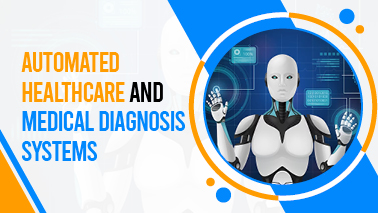
Automated Healthcare and Medical Diagnosis Systems are advanced technologies that leverage artificial intelligence (AI), machine learning, and data analytics to improve healthcare processes, assist healthcare professionals, and enhance patient care. These systems have the potential to revolutionize various aspects of healthcare, including diagnosis, treatment planning, monitoring, and administrative tasks. Here are some key aspects of automated healthcare and medical diagnosis systems:
Medical Imaging and Diagnosis:
Electronic Health Records (EHR):
Remote Monitoring:
Disease Prediction and Risk Assessment:
Drug Discovery and Development:
Patient Chatbots and Virtual Assistants:
Natural Language Processing (NLP):
Quality Improvement and Fraud Detection:
Security and Privacy:
Challenges and Considerations:
Validation and Clinical Trials:
Integration with Existing Systems:
Automated Healthcare and Medical Diagnosis systems hold great promise in improving patient care, reducing costs, and enhancing the overall healthcare experience. However, their development and deployment require careful consideration of ethical, legal, and regulatory factors, as well as ongoing monitoring and evaluation to ensure their effectiveness and safety in real-world healthcare settings.
Tags
Medical Robotics Conferences
Robotics Conferences 2024
Mechatronics Conferences 2024 Europe
Mechatronics Conferences 2024 USA
Mechatronics Conferences
Robotics Conferences 2024 Asia
Robotics Conferences 2024 Europe
Automation Conferences 2024 Asia
Smart Robotics Conferences
Robotics in Healthcare Conferences
Disaster Robotics Conferences
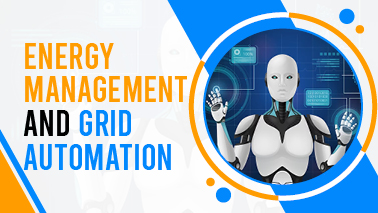
Energy Management and Grid Automation are critical components of modern electrical power systems. They play a crucial role in ensuring the efficient, reliable, and sustainable generation, distribution, and consumption of electrical energy. Here's an overview of these two interconnected concepts:
Energy Management:
Energy management involves the efficient use of electrical energy resources to meet the demand while minimizing waste and costs. It encompasses various strategies and technologies to optimize energy consumption, reduce energy losses, and improve overall energy efficiency. Key aspects of energy management include:
Grid Automation:
Grid automation involves the use of advanced technologies and control systems to enhance the reliability, resilience, and efficiency of the electrical grid. It is a critical component of smart grids, which are modernized electrical grids that incorporate digital communication and automation. Key aspects of grid automation include:
The integration of energy management and grid automation is essential for creating a more sustainable and resilient energy infrastructure. It allows for better management of energy resources, improved response to changing conditions, and increased integration of renewable energy sources, ultimately leading to a more efficient and reliable electrical grid. This is especially crucial as the world transitions toward cleaner and more sustainable energy sources.
Tags
Disaster Robotics Conferences
Mechatronics Conferences
Robotics Conferences 2024 USA
Robotics in Healthcare Conferences
Medical Robotics Conferences
Automation Conferences 2024 Europe
Robotic Technologies Conferences
Mechatronics Conferences 2024 USA
Robotics Conferences 2024 Europe
Industrial Robotics Conferences
Robotics Conferences 2024
Artificial Intelligence Conferences
Automation Conferences
Robotics and Well-Being Conferences
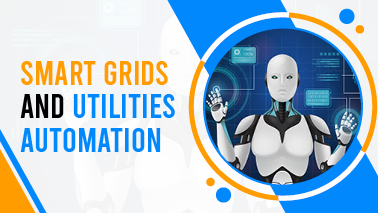
Smart Grids and Utilities Automation are innovative technologies and strategies that aim to modernize and improve the efficiency, reliability, and sustainability of electrical power distribution and management. These concepts are crucial components of the broader effort to transition to a more sustainable and resilient energy infrastructure. Let's explore both smart grids and utilities automation in more detail:
Smart Grids:
Smart grids are advanced electricity distribution systems that leverage digital technology, sensors, communication networks, and automation to enhance the overall functionality of the power grid. Here are some key features and benefits of smart grids:
Utilities Automation:
Utilities automation refers to the use of automation and advanced technologies within the utility industry to streamline operations, reduce costs, enhance customer service, and improve overall efficiency. It encompasses various aspects of utility operations:
By integrating smart grids and utilities automation, energy providers can optimize grid performance, reduce energy losses, enhance customer service, and contribute to a more sustainable and resilient energy system. These technologies play a vital role in the ongoing transformation of the energy sector to meet the challenges of the 21st century, including climate change and the need for reliable and clean energy sources.
Tags
Robotic Technologies Conferences
Automation Conferences
Robotics and Well-Being Conferences
Mechatronics Conferences 2024 USA
Automation Conferences 2024 Europe
Automation Conferences 2024 Asia
Disaster Robotics Conferences
Smart Robotics Conferences
Robotics Conferences 2024
Mechatronics Conferences
Mechatronics Conferences 2024 Europe
Artificial Intelligence Conferences
Medical Robotics Conferences
Robotics Conferences 2024 Asia
Industrial Robotics Conferences

Intelligent Document Processing (IDP) is a technology that combines various Artificial Intelligence (AI) and automation techniques to extract and process information from unstructured documents and data sources. The primary goal of IDP is to streamline and automate document-centric business processes, reducing manual labor, minimizing errors, and improving efficiency.
Here are some key components and features of Intelligent Document Processing:
Document Capture: IDP systems can capture documents from various sources, including scanned paper documents, emails, electronic files, and web forms.
Document Classification: Once documents are captured, IDP uses machine learning algorithms to classify them into different categories or document types. For example, invoices, purchase orders, receipts, contracts, and more can be categorized automatically.
Data Extraction: IDP employs techniques like optical character recognition (OCR) and natural language processing (NLP) to extract relevant data from documents. This can include extracting data such as names, dates, amounts, and other structured information.
Data Validation: IDP systems can validate extracted data against predefined rules or databases to ensure accuracy. For instance, verifying invoice data against a company's database or financial records.
Data Transformation: Extracted data can be transformed into a structured format suitable for integration into other systems or for further processing.
Workflow Automation: IDP often integrates with workflow automation tools to route documents and data to the appropriate individuals or systems for further action. For example, routing invoices for approval or automatically updating inventory levels in an enterprise resource planning (ERP) system.
Machine Learning and Training: Many IDP systems use machine learning to improve their accuracy over time. They can "learn" from user feedback and corrections, which helps them become more proficient at document processing.
Analytics and Reporting: IDP systems often provide analytics and reporting capabilities, enabling organizations to track key performance metrics related to document processing, such as processing times, error rates, and cost savings.
Compliance and Security: Ensuring compliance with data privacy regulations and maintaining document security are critical aspects of IDP. These systems typically include features for encryption, access control, and audit trails.
Integration: IDP solutions are designed to integrate with other business systems, such as ERP, CRM, and content management systems, to enable seamless data exchange and end-to-end automation of business processes.
IDP is particularly valuable in industries that handle large volumes of documents, such as finance, healthcare, legal, and insurance. It can significantly reduce the time and effort required for data entry, document processing, and decision-making while improving accuracy and compliance.
IDP technology continues to evolve, incorporating advanced AI and machine learning techniques, making it even more capable of handling complex document processing tasks and driving greater automation in organizations.
Tags
Robotics Conferences 2024 USA
Industrial Robotics Conferences
Disaster Robotics Conferences
Automation Conferences 2024 Europe
Smart Robotics Conferences
Automation Conferences
Robotics and Well-Being Conferences
Robotics Conferences 2024
Medical Robotics Conferences
Robotics Conferences
Robotics Conferences 2024 Europe
Mechatronics Conferences 2024 USA
Robotics Conferences 2024 Asia
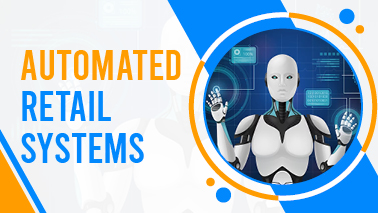
Automated Retail Systems, often referred to as automated retail kiosks or vending machines, are self-service machines or systems that enable customers to purchase products or services without the need for human intervention. These systems have evolved significantly over the years and are used in various industries to provide convenience and efficiency to consumers. Here are some key aspects of automated retail systems:
Types of Automated Retail Systems:
Benefits of Automated Retail Systems:
Automated Retail Systems have found applications in various settings, including airports, malls, office buildings, universities, and even healthcare facilities. They offer a convenient and efficient way for businesses to reach customers while reducing operational costs.
Tags
Automation Conferences
Robotic Technologies Conferences
Mechatronics Conferences 2024 USA
Robotics Conferences 2024 Europe
Automation Conferences 2024 Asia
Automation Conferences 2024 Europe
Robotics in Healthcare Conferences
Mechatronics Conferences
Disaster Robotics Conferences
Medical Robotics Conferences
Robotics Conferences 2024
Robotics Conferences 2024 USA
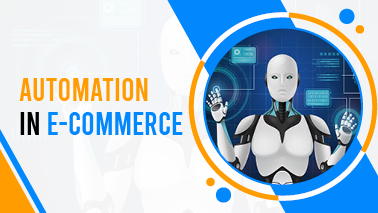
Automation plays a crucial role in the E-commerce industry, helping businesses streamline their operations, improve efficiency, and enhance customer experiences. Here are several areas where automation is commonly used in E-commerce:
Inventory Management: Automating inventory control helps e-commerce businesses keep track of stock levels in real-time. When inventory reaches a certain threshold, the system can automatically reorder products to avoid stockouts or overstocking. This prevents revenue loss due to out-of-stock items or capital tied up in excess inventory.
Order Processing: Automation can speed up order processing, reducing errors and improving order accuracy. This includes order confirmation emails, shipping label generation, and tracking updates. Order processing automation can integrate with various shipping carriers and payment gateways for a seamless customer experience.
Customer Support: Chatbots and virtual assistants can provide 24/7 customer support, answering common questions, assisting with order status inquiries, and resolving simple issues. More complex queries can be escalated to human agents, reducing response times and improving customer satisfaction.
Personalization: Automation helps e-commerce businesses personalize the shopping experience. Algorithms can analyze customer behavior and purchase history to recommend products, send personalized marketing emails, and tailor website content to individual preferences.
Email Marketing: E-commerce platforms often use automated email marketing campaigns to engage customers. Automated emails can include welcome messages, abandoned cart reminders, product recommendations, and post-purchase follow-ups, nurturing customer relationships and increasing sales.
Price Optimization: Dynamic pricing algorithms can automatically adjust product prices based on market demand, competitor pricing, or other factors. This ensures that e-commerce businesses remain competitive and maximize profitability.
Fraud Detection: Automated fraud detection systems analyze transactions in real-time to identify potentially fraudulent activities, such as unusual purchase patterns or suspicious IP addresses. This helps protect both the business and customers from fraud.
Content Generation: E-commerce websites can use automation to generate product descriptions, reviews, and other content. While human input is essential for high-quality content, automation can assist in generating bulk content quickly.
Warehouse and Fulfillment: In large e-commerce operations, automation can be applied to warehouse management and order fulfillment. This includes automated picking and packing systems, conveyor belts, and robotic assistance, which can significantly reduce labor costs and increase efficiency.
Data Analytics: Automated analytics tools can gather and analyze large volumes of data from various sources, providing valuable insights into customer behavior, sales trends, and marketing effectiveness. These insights help e-commerce businesses make data-driven decisions.
Returns Processing: Automation can streamline the returns process by generating return labels, updating inventory levels, and initiating refunds or replacements, making it more convenient for customers and efficient for the business.
Marketplace Integration: If an e-commerce business sells on multiple online marketplaces (e.g., Amazon, eBay), automation can synchronize product listings, inventory levels, and order processing across these platforms.
Social Media Management: Automation tools can schedule and post social media content, respond to messages and comments, and track engagement metrics, helping e-commerce businesses maintain an active online presence.
Incorporating automation into e-commerce operations can save time, reduce human error, enhance customer experiences, and ultimately lead to increased profitability. However, it's essential to strike a balance between automation and human touch to ensure personalized customer interactions and maintain brand authenticity.
Tags
Robotics and Well-Being Conferences
Robotics in Healthcare Conferences
Automation Conferences
Mechatronics Conferences 2024 Europe
Robotics Conferences
Mechatronics Conferences 2024 USA
Robotics Conferences 2024 USA
Robotics Conferences 2024 Asia
Robotics Conferences 2024 Europe
Automation Conferences 2024 Asia
Medical Robotics Conferences
Smart Robotics Conferences
Robotic Technologies Conferences
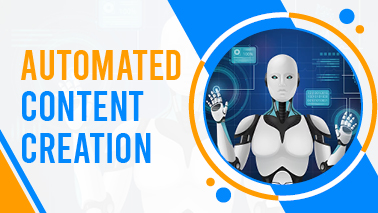
Automated Content Creation refers to the process of using technology, particularly Artificial Intelligence (AI) and Natural Language Processing (NLP), to generate written or multimedia content without direct human involvement. This technology has gained popularity in various industries, including marketing, journalism, e-commerce, and more. Here are some key aspects and considerations related to automated content creation:
Text Generation: AI-powered tools can create written content, such as articles, product descriptions, social media posts, and even reports. These systems analyze data and use pre-defined templates or guidelines to generate coherent and contextually relevant text.
Personalization: Automated content creation can be tailored to individual users or customer segments. It can adapt language, tone, and content to provide a more personalized experience, which can be particularly useful in marketing and customer engagement.
Content Curation: AI algorithms can help businesses discover and curate relevant content from the web. This is often used in content marketing to find articles, blog posts, or videos that align with a brand's messaging.
Multimedia Generation: In addition to text, automated systems can create multimedia content, such as images, videos, and infographics. For example, AI can generate images with text overlays or produce video summaries of written content.
Data Analysis: Automated content creation tools can analyze large datasets and generate reports or summaries based on the data. This is valuable in industries like finance, where automated reports on market trends are essential.
Chatbots and Virtual Assistants: AI-powered chatbots and virtual assistants can engage with users in real-time, providing answers to questions, offering product recommendations, and even generating responses in natural language.
Translation and Localization: AI can translate content between languages and adapt it to suit local cultural preferences, helping businesses reach a global audience more effectively.
Quality and Ethics: Ensuring the quality and ethical standards of automatically generated content is essential. Businesses must monitor and review automated content to avoid inaccuracies, biases, or other issues.
SEO and Keywords: Automated content should be optimized for search engines to improve its visibility. This includes using relevant keywords and meta descriptions.
Legal and Copyright Considerations: Automated content creation should adhere to copyright laws and respect intellectual property rights. Plagiarism and copyright violations can lead to legal issues.
User Experience: While automated content can be efficient, it's essential to balance automation with the need for a human touch. Some content, particularly in creative or sensitive domains, may require human intervention to maintain authenticity and emotional connection.
Training and Fine-Tuning: AI models used for content generation require training and continuous fine-tuning to improve their performance and adapt to changing trends and preferences.
Cost and ROI: While automation can save time and resources, businesses should also consider the cost of implementing and maintaining automated content creation systems and assess the return on investment (ROI).
Overall, automated content creation has the potential to streamline content production processes, improve efficiency, and provide personalized experiences for users. However, it should be used thoughtfully, with a focus on maintaining quality, ethics, and the unique aspects of human creativity where needed.
Tags
Robotics Conferences 2024 USA
Mechatronics Conferences
Robotics Conferences 2024 Europe
Robotics and Well-Being Conferences
Artificial Intelligence Conferences
Smart Robotics Conferences
Robotics Conferences
Medical Robotics Conferences
Robotics in Healthcare Conferences
Industrial Robotics Conferences
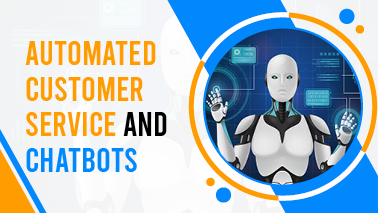
Automated Customer Service and Chatbots are technological solutions used by businesses to enhance customer support, streamline communication, and improve overall customer experience. They leverage Artificial Intelligence (AI) and Natural Language Processing (NLP) technologies to automate interactions with customers, answer common questions, and provide assistance without human intervention. Here are some key aspects of automated customer service and chatbots:
24/7 Availability: Automated customer service and chatbots can operate round the clock, ensuring that customers can get assistance at any time, even outside regular business hours.
Cost-Efficiency: Implementing chatbots can be cost-effective compared to hiring and training human customer support agents. They can handle a large volume of inquiries simultaneously without increasing costs.
Instant Responses: Chatbots provide instant responses to customer inquiries, reducing wait times and increasing customer satisfaction.
Consistency: Chatbots deliver consistent responses and information to customers, ensuring that all users receive the same level of service.
Scalability: As your business grows, chatbots can easily handle increased customer inquiries without the need for significant staffing increases.
Data Collection: Chatbots can collect valuable customer data and insights, which can be used for analytics, personalization, and improving products and services.
Task Automation: Beyond customer inquiries, chatbots can automate various tasks, such as appointment scheduling, order tracking, and more.
Multichannel Support: Chatbots can be integrated into various communication channels, including websites, social media platforms, messaging apps, and even phone systems.
Personalization: Advanced chatbots can use customer data to provide personalized recommendations and assistance, improving the overall customer experience.
Human Handoff: When a chatbot encounters a complex or sensitive issue it can't handle, it can seamlessly transfer the conversation to a human agent for further assistance.
Training and Improvement: Chatbots can be continuously trained and improved using machine learning techniques to better understand and respond to customer inquiries over time.
Language Support: Many chatbots are multilingual, allowing businesses to serve customers in various languages and regions.
While automated customer service and chatbots offer numerous advantages, it's essential to consider some challenges:
Limited Understanding: Chatbots may struggle with understanding complex or nuanced queries, leading to frustration for customers.
Initial Setup: Implementing chatbots requires initial development and integration efforts, which can be time-consuming and costly.
Maintenance: Chatbots require ongoing maintenance to ensure they stay up-to-date and perform optimally.
Privacy and Security: Handling customer data requires robust security measures to protect sensitive information.
Loss of Human Touch: Some customers prefer human interactions and may feel disconnected when dealing solely with chatbots.
To successfully implement automated customer service and chatbots, businesses should carefully plan their deployment, continuously improve their capabilities, and strike a balance between automation and human support to provide the best possible customer experience.
Tags
Automation Conferences 2024 Asia
Robotics Conferences
Robotic Technologies Conferences
Mechatronics Conferences 2024 USA
Robotics Conferences 2024 USA
Robotics Conferences 2024 Europe
Mechatronics Conferences
Robotics and Well-Being Conferences
Smart Robotics Conferences
Robotics Conferences 2024
Mechatronics Conferences 2024 Europe
Market Insights of Robotics in USA:
The market value of robotics in the USA in 2023 is estimated to be US$7.72 billion. This market is expected to grow at a CAGR (Compound Annual Growth Rate) of 3.86% from 2023 to 2028, reaching a market volume of US$9.33 billion by 2028.
The US is the world's largest market for robotics, accounting for approximately 20% of the global market. The growth of the robotics market in the US is being driven by a number of factors.
The largest segment of the US robotics market is service robotics, which accounts for approximately 70% of the market. Service robots are used in a variety of industries, including healthcare, logistics, and hospitality.
The industrial robotics segment accounts for the remaining 30% of the US robotics market. Industrial robots are used in a variety of manufacturing processes, such as welding, painting, and assembly.
Market Insights of Robotics in Europe:
The market value of robotics in Europe in 2023 is estimated to be US$12.63 billion. This market is expected to grow at a CAGR (Compound Annual Growth Rate) of 3.87% from 2023 to 2028, reaching a market volume of US$15.27 billion by 2028.
Europe is the second-largest market for robotics in the world, after the US. The growth of the robotics market in Europe is being driven by a number of factors.
The largest segment of the European robotics market is service robotics, which accounts for approximately 70% of the market. Service robots are used in a variety of industries, including healthcare, logistics, and hospitality.
The industrial robotics segment accounts for the remaining 30% of the European robotics market. Industrial robots are used in a variety of manufacturing processes, such as welding, painting, and assembly.
Market Insights of Robotics in Asia Pacific:
The market value of robotics in Asia Pacific in 2023 is estimated to be US$48.5 billion. This market is expected to grow at a CAGR (Compound Annual Growth Rate) of 11.4% from 2023 to 2032, reaching a market volume of US$142.8 billion by 2032.
Asia Pacific is the largest market for robotics in the world, accounting for approximately 49% of the global market. The growth of the robotics market in Asia Pacific is being driven by a number of factors.
The largest segment of the Asia Pacific robotics market is industrial robotics, which accounts for approximately 60% of the market. Industrial robots are used in a variety of manufacturing processes, such as welding, painting, and assembly.
Market Insights of Robotics in Middle East:
The market value of robotics in the Middle East countries is estimated to be US$2.5 billion in 2023. This market is expected to grow at a CAGR (Compound Annual Growth Rate) of 15.7% from 2023 to 2028, reaching a market volume of US$5.7 billion by 2028.
The largest segment of the Middle East robotics market is service robotics, which accounts for approximately 70% of the market. Service robots are used in a variety of industries, including healthcare, logistics, and hospitality.
The industrial robotics segment accounts for the remaining 30% of the Middle East robotics market. Industrial robots are used in a variety of manufacturing processes, such as welding, painting, and assembly.
The Middle East robotics market is still in its early stages of development, but it is growing rapidly. The factors mentioned above are expected to continue to drive the growth of the market in the coming years. This growth will create opportunities for companies that develop, manufacture, and sell robots and robotics components in the Middle East.
Market Insights of Automation in USA:
The automation market in the United States is a large and growing market, with a wide range of applications in various industries. The market is expected to grow at a CAGR of 7% from 2023 to 2033, reaching a valuation of US$ 81.4 billion by 2033.
The key factors driving the growth of the automation market in the US include:
Increasing demand for manufacturing automation
Growing adoption of robotics and artificial intelligence (AI)
Government support for automation
The major industries that are driving the growth of the automation market in the US include:
• Manufacturing
• Logistics
• Healthcare
The key trends in the automation market in the US include:
• The rise of industrial robots
• The increasing use of artificial intelligence (AI)
• The growth of cloud-based automation solutions
Market Insights of Automation in Europe:
The European automation market is expected to grow at a CAGR of 6.4% from 2021 to 2028, reaching a value of US$67.96 billion by 2028. The key drivers of this growth will be the increasing adoption of Industry 4.0, the rising demand for automation in the manufacturing and logistics sectors, and the growing shortage of skilled workers.
Some of the key trends in the European automation market include:
• The increasing adoption of robots and cobots
• The growth of artificial intelligence (AI) and machine learning (ML)T
• The convergence of IT and OT
Some of the key industries that are driving the growth of the European automation market include:
• Manufacturing
• Logistics
• Automotive
• Food and beverage
Market Insights of Automation in Asia Pacific:
The Asia Pacific automation market is segmented into different types of automation, including:
• Industrial automation: Industrial automation is used in the manufacturing sector to automate tasks such as assembly, welding, and painting.
• Process automation: Process automation is used in a variety of industries, including oil and gas, chemicals, and food and beverage, to automate tasks such as mixing, blending, and packaging.
• Robotic process automation (RPA): RPA is a software-based automation solution that can be used to automate a wide range of repetitive tasks in back-office operations.
China is the largest automation market in Asia Pacific, followed by Japan and India. Other key markets in the region include South Korea, Singapore, and Taiwan.
The following are some of the key trends in the Asia Pacific automation market:
• Growing adoption of AI and machine learning
• Rising demand for collaborative robots
• Growing adoption of cloud-based automation solutions
Market Insights of Automation in Middle East:
The Middle East automation market is still relatively nascent, but it is growing rapidly. According to a report by Mordor Intelligence, the Middle East industrial automation market is expected to grow at a CAGR of 7.1% during the forecast period (2023-2028).
The key automation technologies that are being adopted in the Middle East include:
• Robotics
• Artificial intelligence (AI)
• Industrial Internet of Things (IIoT)
The key challenges facing the automation market in the Middle East include:
• Lack of skilled workforce
• High cost of automation
• Regulatory uncertainty
Despite these challenges, the automation market in the Middle East is expected to grow significantly in the coming years. Governments, businesses, and investors are increasingly recognizing the benefits of automation, and they are investing heavily in the development and deployment of automation technologies.
Here are some of the key trends that are expected to drive the growth of the automation market in the Middle East:
• The rise of Industry 4.0: Industry 4.0 is the fourth industrial revolution, and it is characterized by the increasing use of digital technologies in manufacturing and industrial processes.
• The growth of the smart city market: Smart cities are cities that use technology to improve the efficiency and quality of life for their residents.
• The increasing adoption of cloud computing: Cloud computing is making it easier for businesses to adopt automation technologies, as they do not need to invest in their own hardware and software infrastructure.
The automation market in the Middle East is a rapidly growing market with a lot of potential. Businesses and investors in the region are well-positioned to benefit from the growth of this market
List of 100 Companies in the Robotics:
Boston Dynamics / iRobot / Fanuc / KUKA / ABB / Yaskawa Electric Corporation / DJI / Intuitive Surgical / SoftBank Robotics / Samsung Robotics / Toyota Robotics / NVIDIA / Fetch Robotics / Blue Ocean Robotics / Omron Corporation / Rethink Robotics / Universal Robots / Sphero / Hanson Robotics / Lockheed Martin / Northrop Grumman / Epson Robots / DENSO Robotics / Teradyne / Mitsubishi Electric / Kawasaki Robotics / Midea Group (KUKA) / Blue River Technology / Clearpath Robotics / Comau / Ekso Bionics / Anki / Auris Health / Vicarious Surgical / Sarcos Robotics / Neurala / Brain Corp / RightHand Robotics / GreyOrange / Exyn Technologies / Ghost Robotics / Canvas Technology / Agility Robotics / Nuro / ReWalk Robotics / RoboKind / Shadow Robot Company / Mayfield Robotics / Kindred AI / Swisslog / Locus Robotics / Seegrid Corporation / Vecna Robotics / VEX Robotics / Diligent Robotics / Modbot / Catalia Health / Savioke / Simbe Robotics / Starship Technologies / Bear Robotics / Carbon Robotics / Miso Robotics / Rulai / UiPath / CloudMinds / Aethon / Marble / Zymergen / Embodied, Inc. / Covariant / Built Robotics / AMP Robotics / OpenAI / Deep 6 AI / Vicarious / Osaro / Suki AI / Zebra Medical Vision / Covariant AI / Freenome / Vicarious Surgical / Element AI / Nutonomy / Zoox / Drive.ai / Optimus Ride / Voyage / TuSimple / Nauto / AEye / SenseTime / CloudMinds / OrionStar / Geek+ / Jibo / UBTech Robotics / RoboSense
100 Companies that are Prominent in the Automation Industry:
Siemens AG / ABB Ltd. / Rockwell Automation / Schneider Electric / Honeywell International Inc. / General Electric / Emerson Electric Co. / Fanuc Corp. / Yokogawa Electric Corp. / Mitsubishi Electric Corp. / Omron Corp. / Hitachi, Ltd. / Bosch Rexroth / Beckhoff Automation / KUKA AG / Johnson Controls International / Endress+Hauser Management AG / Festo / Parker Hannifin Corp. / B&R Industrial Automation / SAP SE / Oracle Corp. / IBM / Microsoft Corp. / Blue Prism / UiPath / Automation Anywhere / WorkFusion / Nice Ltd. / Pegasystems / Samsung Electronics / LG Electronics / Panasonic Corp. / Toshiba Corp. / Cisco Systems / Juniper Networks / Fortinet / Check Point Software Technologies / Palo Alto Networks / FANUC America Corporation / DENSO Robotics / Epson Robots / Stäubli International AG / Teradyne Inc. / Perceptron Inc. / FLIR Systems Inc. / 3D Systems Corp. / Stratasys Ltd. / Keyence Corp. / SICK AG / Pepperl+Fuchs / Turck / Balluff / IFM Electronic GmbH / Texas Instruments / Intel Corp. / NVIDIA Corp. / Advanced Micro Devices / Qualcomm Inc. / Broadcom Inc. / Infineon Technologies AG / Microchip Technology Inc. / NXP Semiconductors NV / STMicroelectronics NV / TE Connectivity Ltd. / Molex LLC / Eaton Corp. PLC / Phoenix Contact GmbH & Co. KG / National Instruments Corp. / Ansys Inc. / Dassault Systèmes SE / Autodesk Inc. / Siemens Healthineers AG / Thermo Fisher Scientific Inc. / Agilent Technologies Inc. / Waters Corp. / Mettler-Toledo International Inc. / AMETEK Inc. / Bruker Corp. / Illumina Inc. / Verint Systems Inc. / Cognex Corp. / Hexagon AB / FARO Technologies Inc. / Renishaw PLC / Zymergen Inc. / Calient Technologies Inc. / IPG Photonics Corp. / MKS Instruments Inc. / Coherent Inc. / Lumentum Holdings Inc. / II-VI Inc. / Infinera Corp. / NeoPhotonics Corp. / Viavi Solutions Inc. / Acacia Communications Inc. / Finisar Corp. / Oclaro Inc. / Lattice Semiconductor Corp. / Xilinx Inc.
100 Prominent Journals in Robotics:
IEEE Transactions on Robotics / Robotics and Autonomous Systems / International Journal of Robotics Research / Journal of Field Robotics / Robotics and Computer-Integrated Manufacturing / Autonomous Robots / Robotics and Biomimetics / Journal of Intelligent & Robotic Systems / Industrial Robot / Journal of Robotic Systems / Advanced Robotics / Robotics: Science and Systems / Artificial Intelligence / Journal of Human-Robot Interaction / IEEE/ASME Transactions on Mechatronics / International Journal of Medical Robotics and Computer Assisted Surgery / Journal of Robotics / Robotics and Automation Magazine / Frontiers in Robotics and AI / Journal of Mechanisms and Robotics / Robotica / International Journal of Advanced Robotic Systems / Assembly Automation / Robotics / Mechatronics / Mechanism and Machine Theory / IEEE Robotics & Automation Letters / Soft Robotics / Journal of Bionic Engineering / Paladyn, Journal of Behavioral Robotics / International Journal of Social Robotics / Cognitive Systems Research / IEEE Transactions on Automation Science and Engineering / Journal of Intelligent Manufacturing / Neural Networks / Swarm Intelligence / Cybernetics and Systems / Robotics in Medicine and Biology / Journal of Adaptive and Intelligent Materials and Systems / Journal of Real-Time Image Processing / Automation in Construction / IEEE Transactions on Haptics / Autonomous Agents and Multi-Agent Systems / Humanoid Robotics: A Reference / Journal of Control, Automation and Electrical Systems / Journal of Aerospace Information Systems / Precision Engineering / Journal of Dynamic Systems, Measurement, and Control / Applied Bionics and Biomechanics / Evolutionary Intelligence / Journal of Intelligent Service Robotics / Robotics, Automation, and Control / Computational and Mathematical Methods in Medicine / Journal of Automation and Information Sciences / Control Engineering Practice / Journal of Vibration and Control / Open Robotics Journal / Artificial Life / Cognitive Computation / International Journal of Humanoid Robotics / Machine Vision and Applications / Journal of Ambient Intelligence and Smart Environments / Journal of Artificial Intelligence and Soft Computing Research / International Journal of Mechanisms and Robotic Systems / Journal of Robotics and Mechatronics / Journal of Automation, Mobile Robotics and Intelligent Systems / Journal of Intelligent and Robotic Systems: Theory and Applications / International Journal of Robotics and Automation / Mechatronic Systems and Control / Journal of Computational and Nonlinear Dynamics / Journal of Robotics Networking and Artificial Life / Journal of Artificial Intelligence Research / Cognitive Robotics / AI & Society / International Journal of Fuzzy Systems / Control Theory and Technology / Bioinspiration & Biomimetics / Robotics Business Review / International Journal of Computer Vision / Neural Computing and Applications / Journal of Automation and Control Engineering / Mechatronics Letters / The Visual Computer / International Journal of Control, Automation, and Systems / Journal of Intelligent Systems / Journal of Mechanical Science and Technology / Journal of Computational Science / IEEE Transactions on Neural Networks and Learning Systems / Journal of Artificial Intelligence Research / Machine Learning / Neural Processing Letters / Neural Network World / International Journal of Neural Systems / International Journal of Approximate Reasoning / International Journal of Machine Learning and Cybernetics / Knowledge and Information Systems / Computational Intelligence and Neuroscience / Neurocomputing
Contact us now and we will make your event unique & unforgettable
All numbers indicates percentage %
Europe
North America
Middle East
Asia Pacific
Africa
All numbers indicates percentage %
Industry Professionals
Academics and Researchers
Government and Policy Makers
Investors and Entrepreneurs
Engineers and Developers
Corporate Decision-Makers
Supply Chain and Logistics Professionals
Healthcare Sector
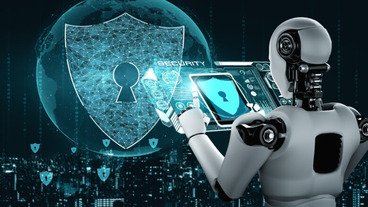
Imagine a world where robots seamlessly navigate our homes, workplaces, and public spaces, collecting vast amounts of data to enhance our lives. While this vision of a fully autonomous future is tantalizing, it raises an unsettling question: Who is protecting the sensitive information that these intelligent machines gather? I
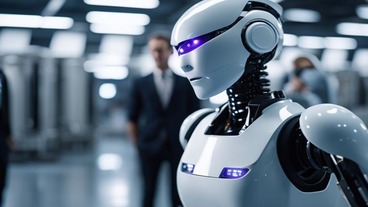
Human-out-of-the-loop (HOOTL)/Autonomy-in-the-loop (AITL) autonomous robotics agents (ARAs) are taking their indispensable places in our societies to achieve various missions. This trend is expected to increase exponentially thanks to the advancing cyber-physical systems (CPSs) and AI techniques. A diverse range of complex tasks
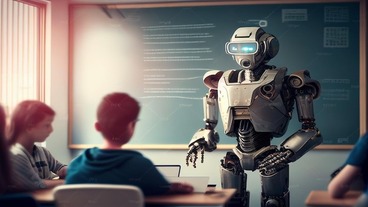
In a world that is being transformed innovation and robotics, today’s youth need opportunities that go beyond core school subjects to prepare to lead us into the high-tech future. This engaging presentation will share cutting edge work being performed by Code & Circuit to educate youth in robotics applications, machine learnin
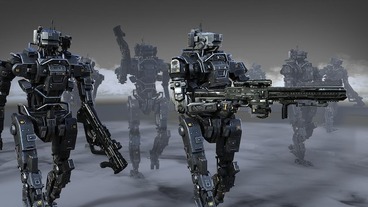
Artificial intelligence (AI) and robotic technologies are evolving rapidly and are poised to have far-reaching impacts in nearly every aspect of society around the globe, including the military domain. AI offers cognitive reasoning and learning about problem domains—processing large quantities of data to develop situational aw

The wine business relies heavily on wine quality certification. We present a conceptual, AI, and mathematical framework to predict wine quality, and then validated these using a large dataset with machine learning approaches. It is worth noting that the predicted wine quality indices are in good agreement with the wine experts�
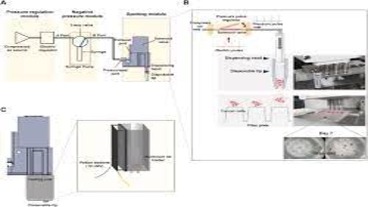
Objectives & Scope: The development of organoid culture technologies has triggered industrial interest in ex vivo drug test-guided clinical response prediction for precision cancer therapy. The three-dimensional culture encapsulated with basement membrane (BM) components is extremely important in establishing ex vivo organoids a
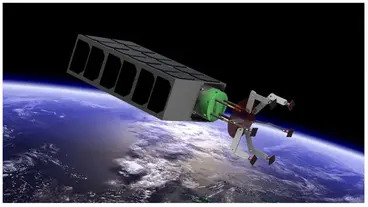
Space debris is a growing global concern, and robotics offers a promising solution for cleaning up our cosmic neighborhood. Research of the space debris population conducted with techniques like long-term evolution models such as DELTA has indicated that certain orbital regions are reaching critical density, which could resul
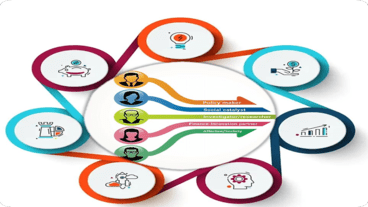
The paper seeks to clarify how art could help empower the residents with higher agency and two-way communication as part of a Green Transition and more open smart cities governance (i.e. the dimension that examines bringing multiple stakeholders together to solve common problems, improve public services and digitally manage smar
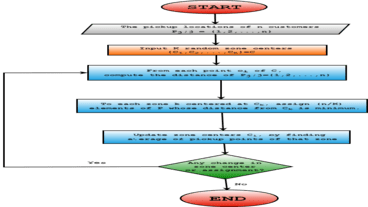
The work is concerned with the two-level modelling of the service set-up planning of a logistic service provider company. The problem discussed is a combination of location allocation problem and a static dial-a-ride problem. The objective of the upper level decision maker is to decide the location of customer service centres in






















